English version
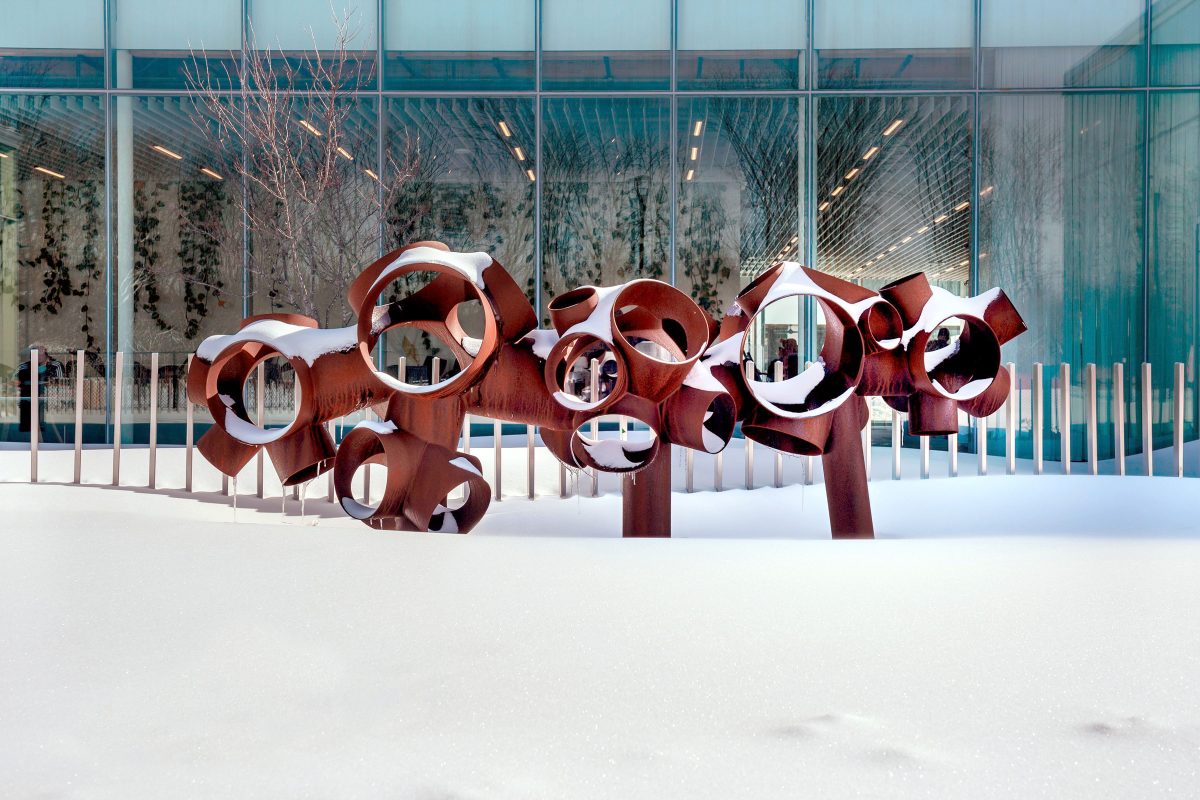
Bibliothèque Donalda-Charron – Ville de Gatineau
Corten steel, galvanized steel
90 x 350 x 170cm
Inspired by the root networks that extend into the forest near the site, the sculpture represents an expanded section of an organic communication network.
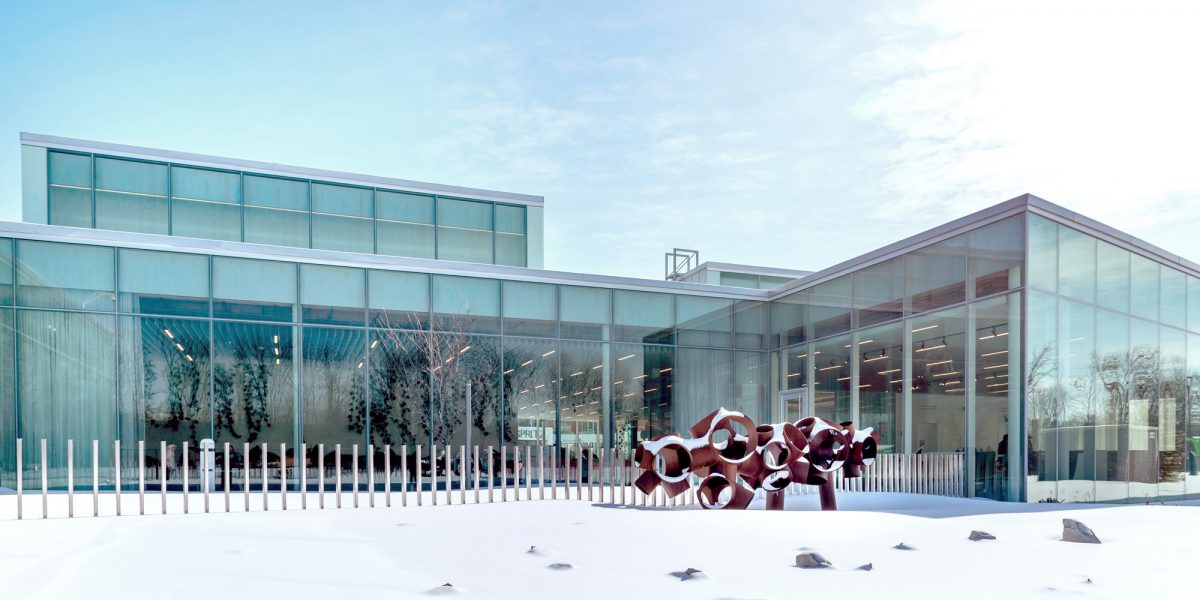
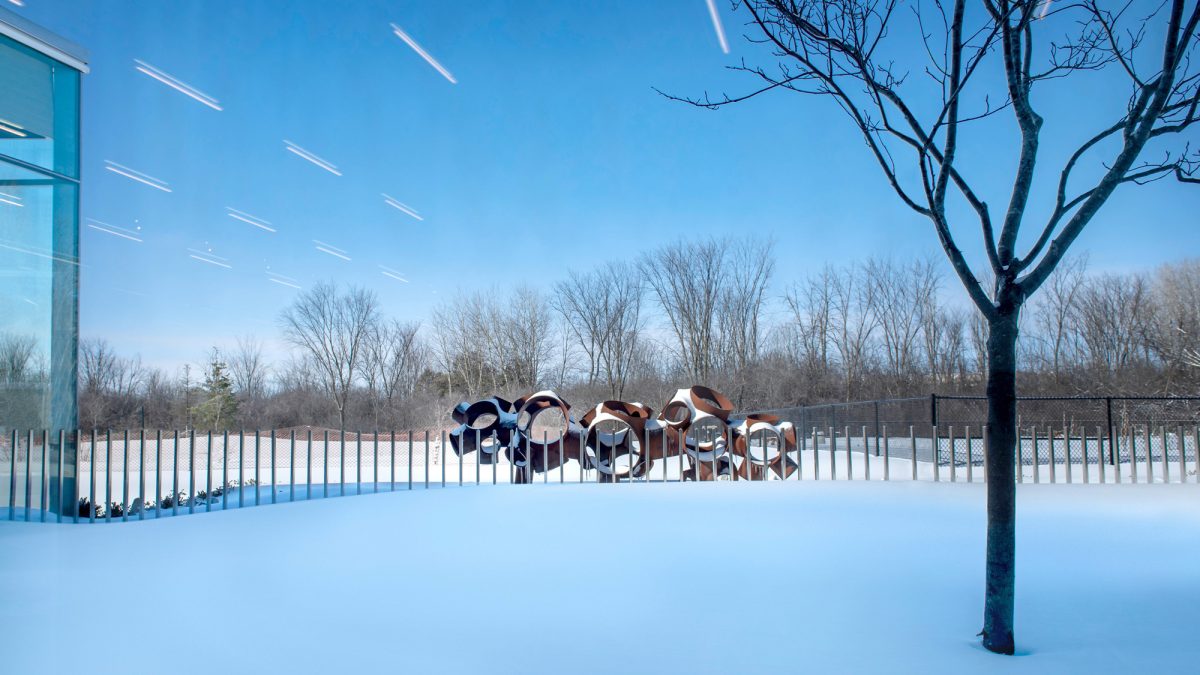
Fabrication Lafontaine Ironwerk; Installation Infravert; Engineer Latéral
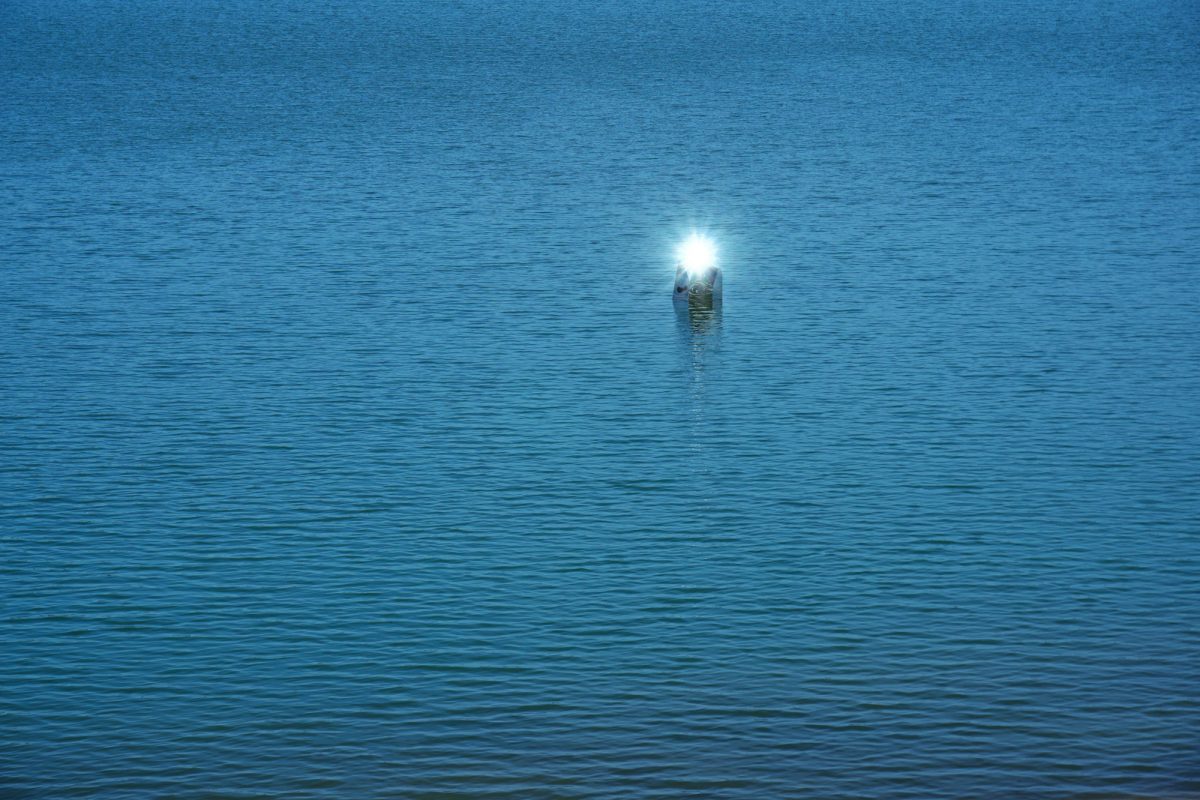 Treasure [2020]
Treasure [2020]
1083 x 1099 x 1541mm (2500mm underwater)
Exhibition Ruhr Ding: Klima
Curators Vlado Velkov and Britta Peter
Production Urbane Künste Ruhr
The negative space left by the excavation of sand over the last century by the mining industry create this lake. Not being able to visit, I asked the organization to send a sand sample by mail. The quartz sand found here emerges from the Cretaceous period, about 100 million years ago. Time disintegrates rock, grinding them into grains of sand that travel and accumulate along rivers in their beds. This sample then travels to me in Montreal. I look with a microscope at pinch of sand and find something that was invisible to my eyes. I translated this complex geometry into a solid made of many mirror planes welded together to form a monolith designed to float on the Silbersee like an ice cube. The work addresses the relationship between the new leisure-oriented usage of the site and what was previously there. Both conspicuous and furtive, the sculpture is simultaneously absent and present, visible and invisible. It disappears and reappears, blinking above the surface of the silver lake.
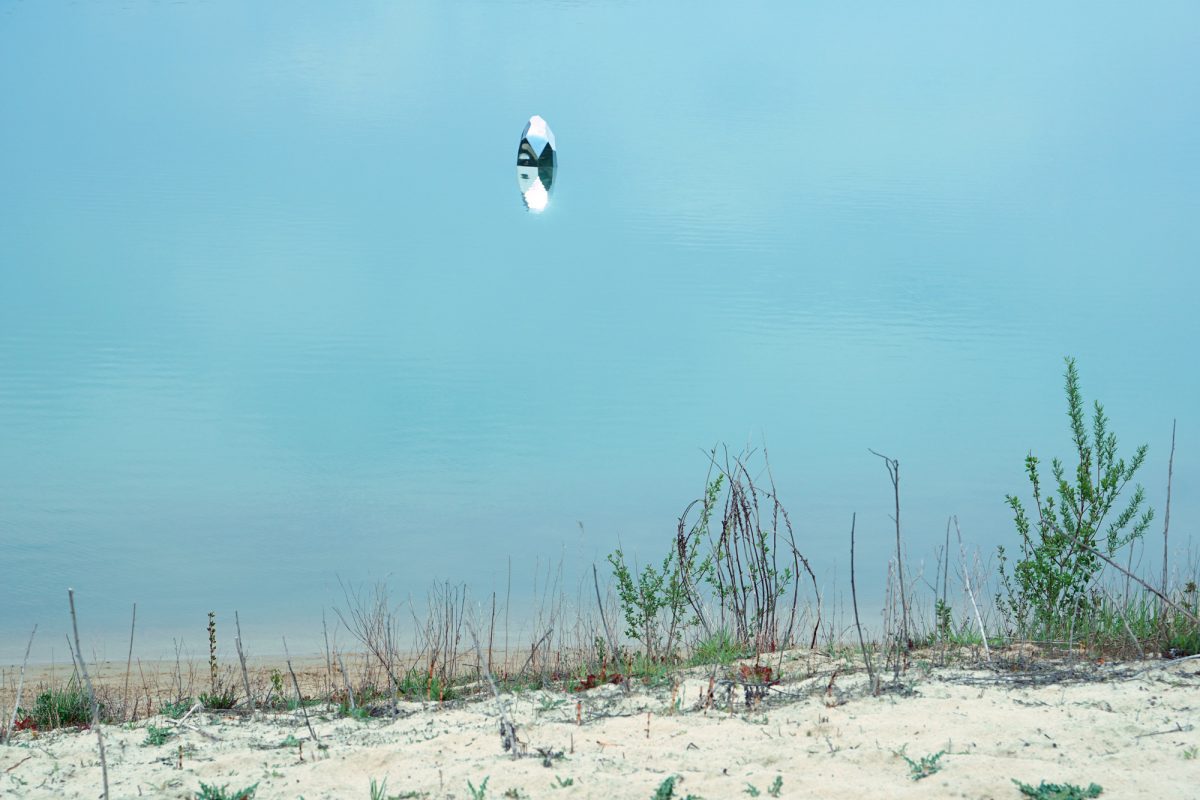
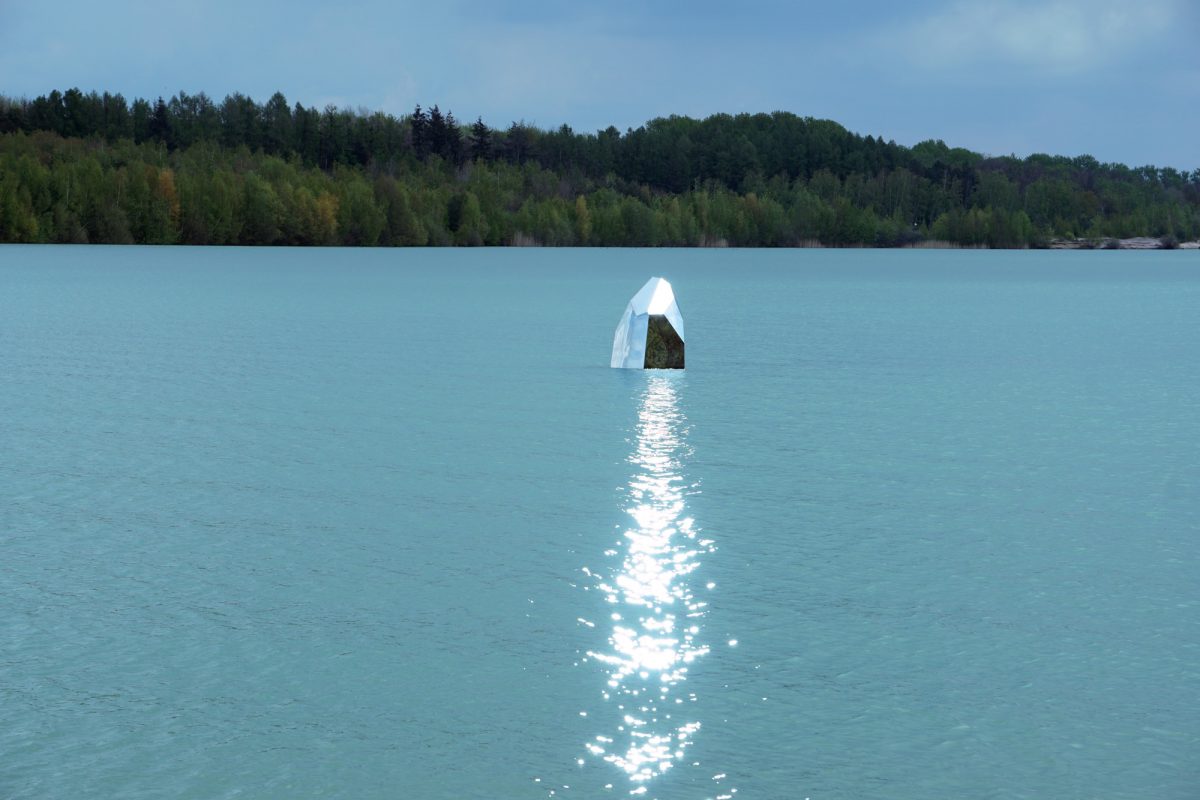
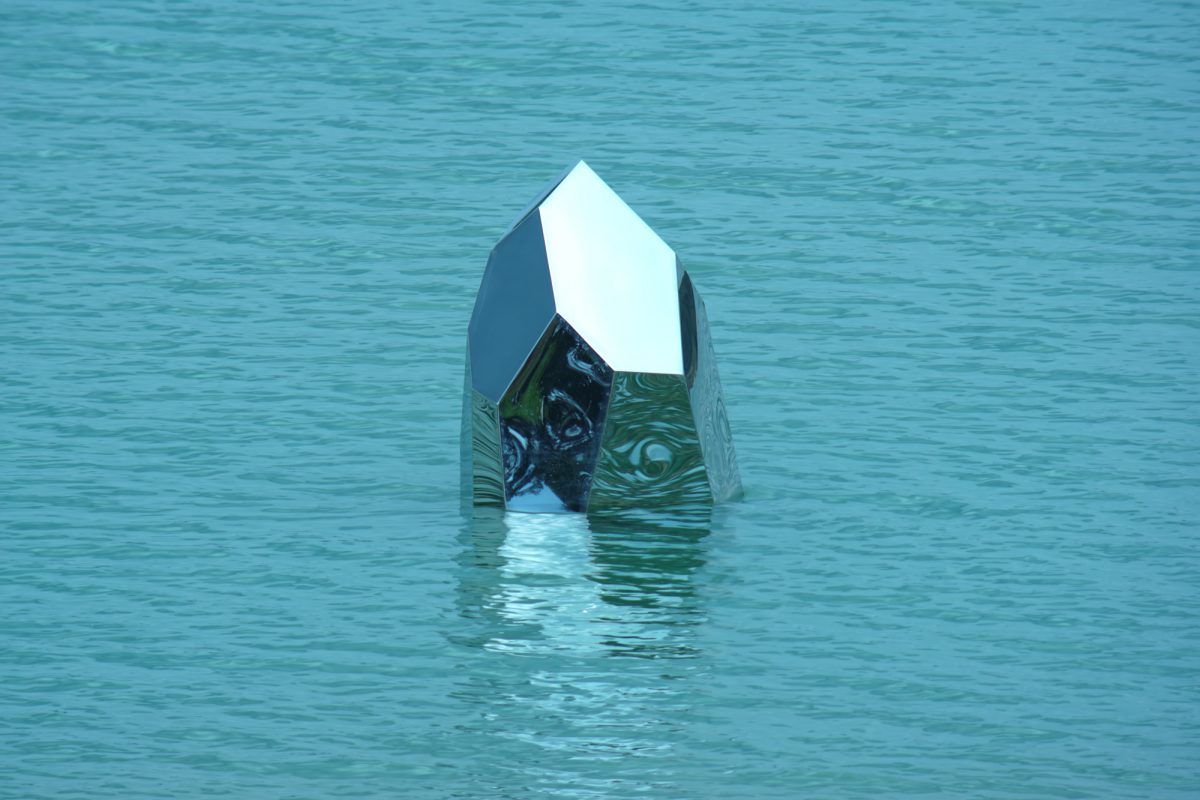
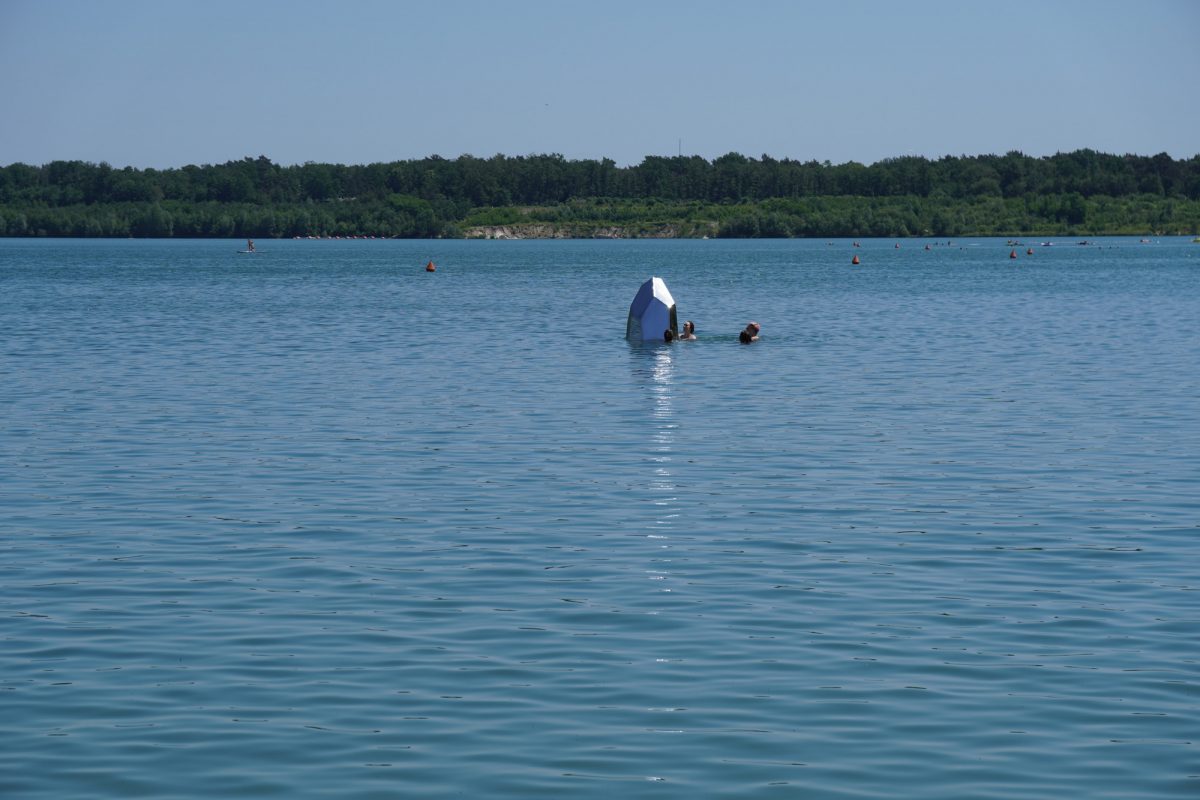
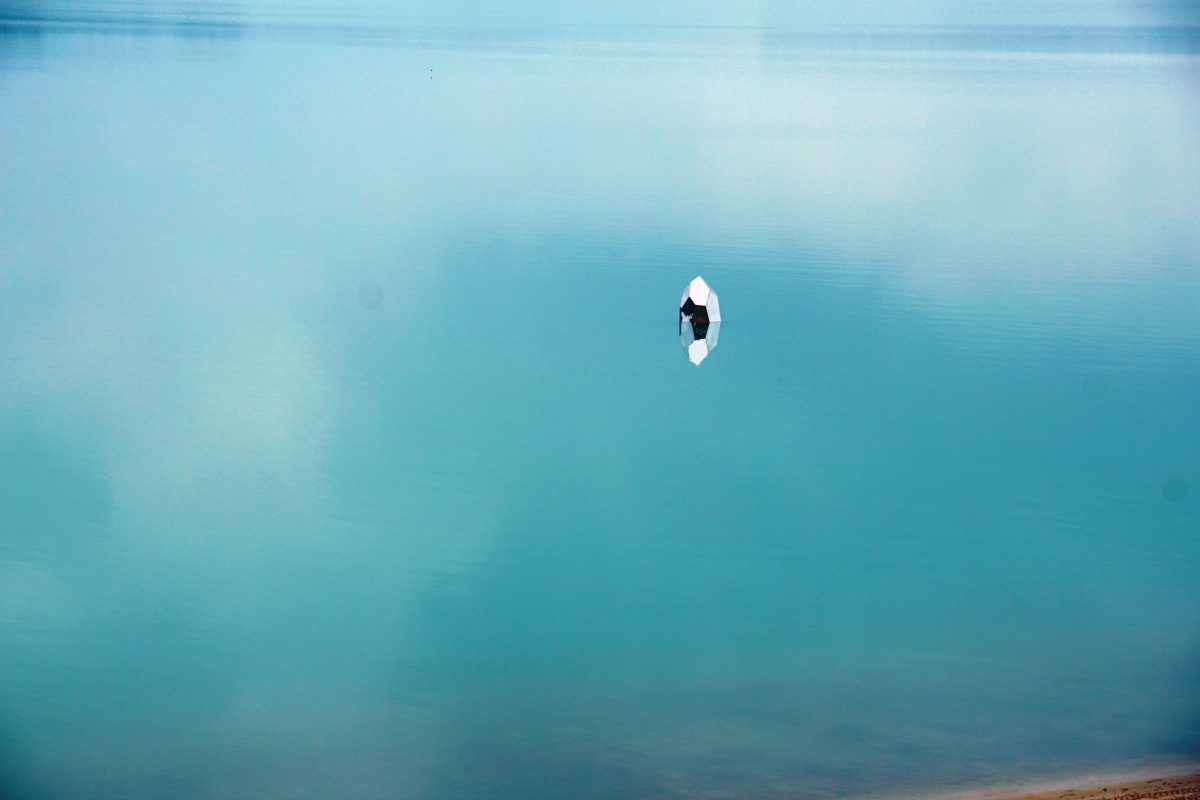
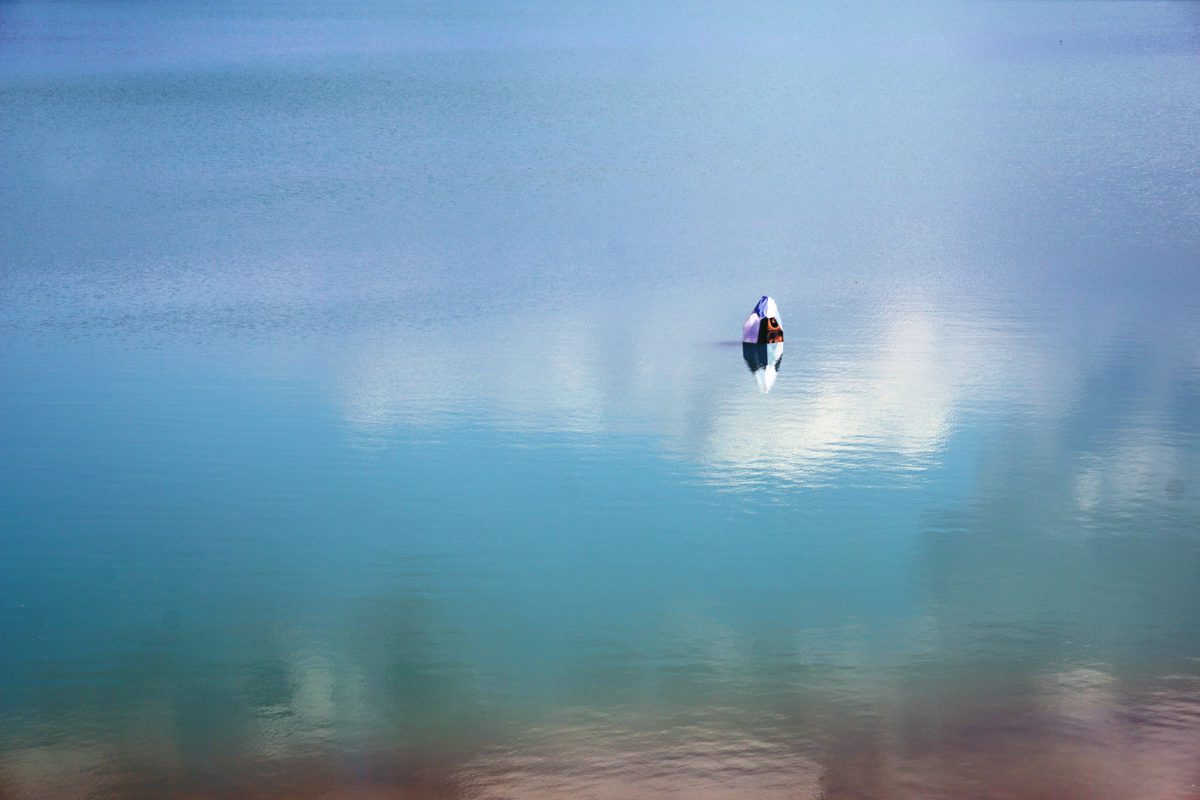
Produce for the exhibition Ruhr Ding: Klima, Treasure is floating on the lake Silbersee, in the Ruhr Region (Germany). I like to thanks Philipp Rohé, Julian Breuer and Stefan Göbel who install my work in my absence du to Covid travel ban in Germany. The curator Vlado Velkov and Britta Peter, and Urbane Künste Ruhr that produce my work. And Jonathan Killing for his help engineering the work. photos by Philipp Rohé and Vlado Velkov
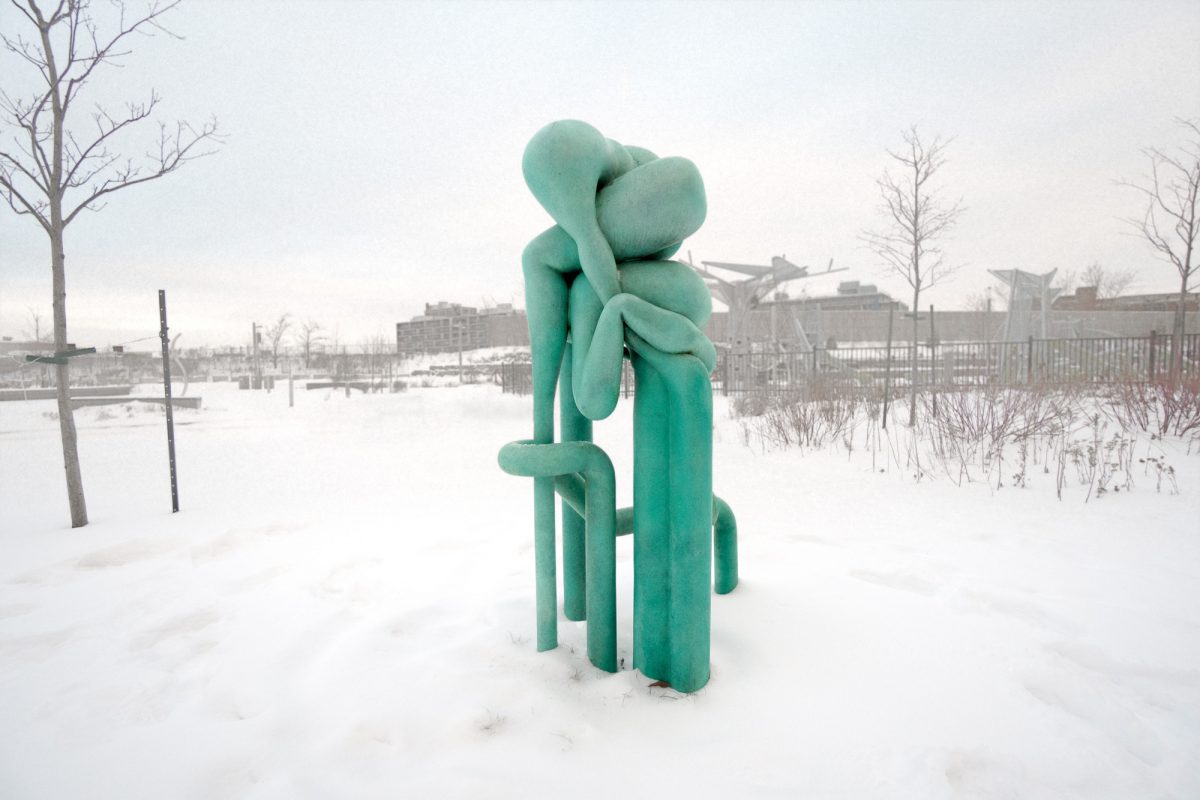
Sporophores [2021]
13 human scale bronze sculptures, installed on 11 sites.
Pierre Dansereau Park, Montreal
Sporophores is formed of 13 naturally oxidized bronze sculptures, reminiscent of the urban infrastructures from which they seem to be sprouting from. They bend and twist, curling up on one another and creating knots, thus binding the site’s industrial past to its new landscaping’s and natural restauration. In the vegetal world, the sporophores are the fruitification of mycelia, the visible reproductive organs of a mushroom. Mycelia are networks of subterranean bodies creating complex distribution webs that foster a sense of community and mutual aid between the various living organisms. Standing on the site neighboring the Université de Montréal’s new science complex, these sculptures draw inspiration from this organic meshwork, whose recent observation has led to show how they precede humans when it comes to networking and sharing.
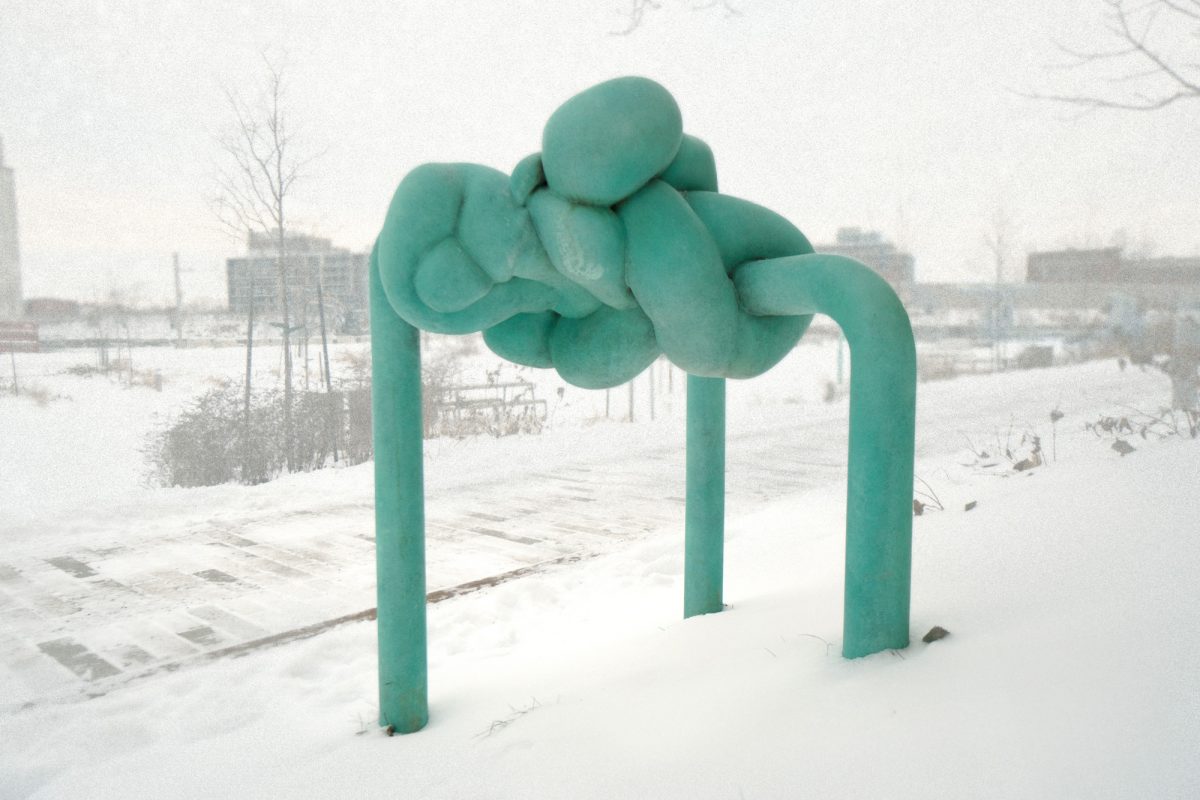
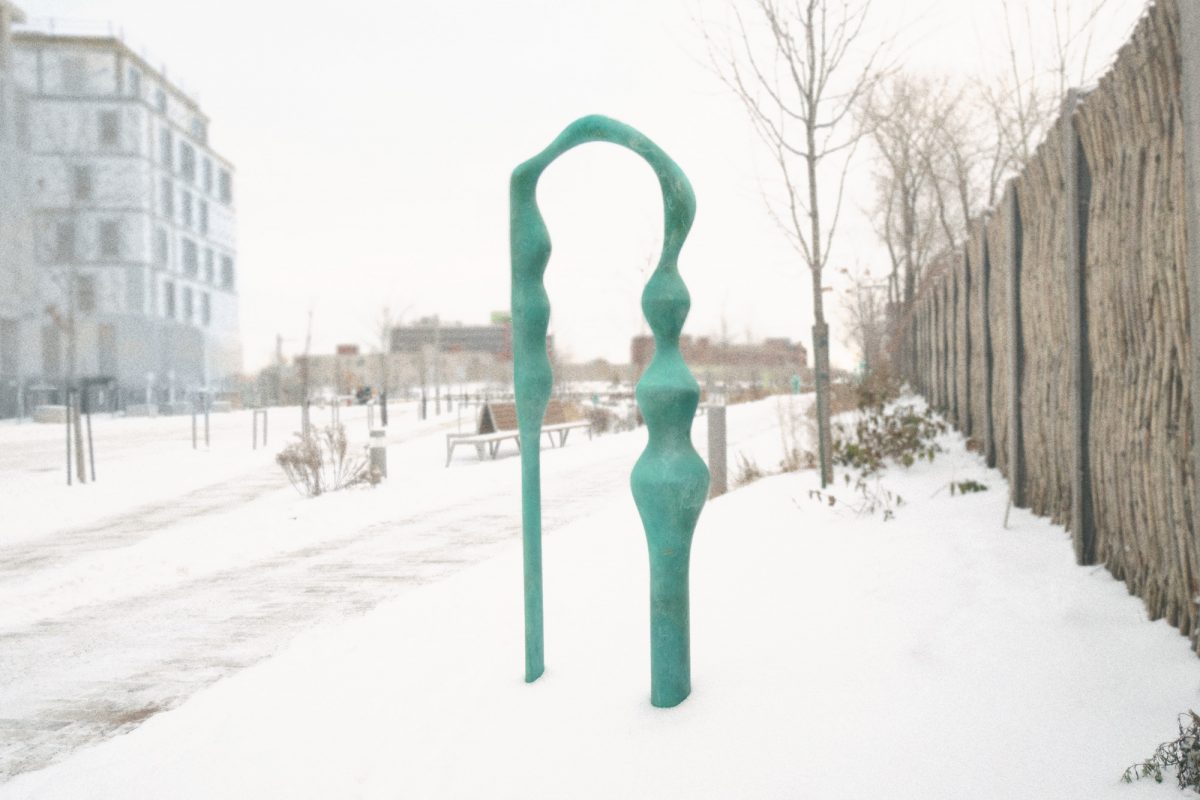

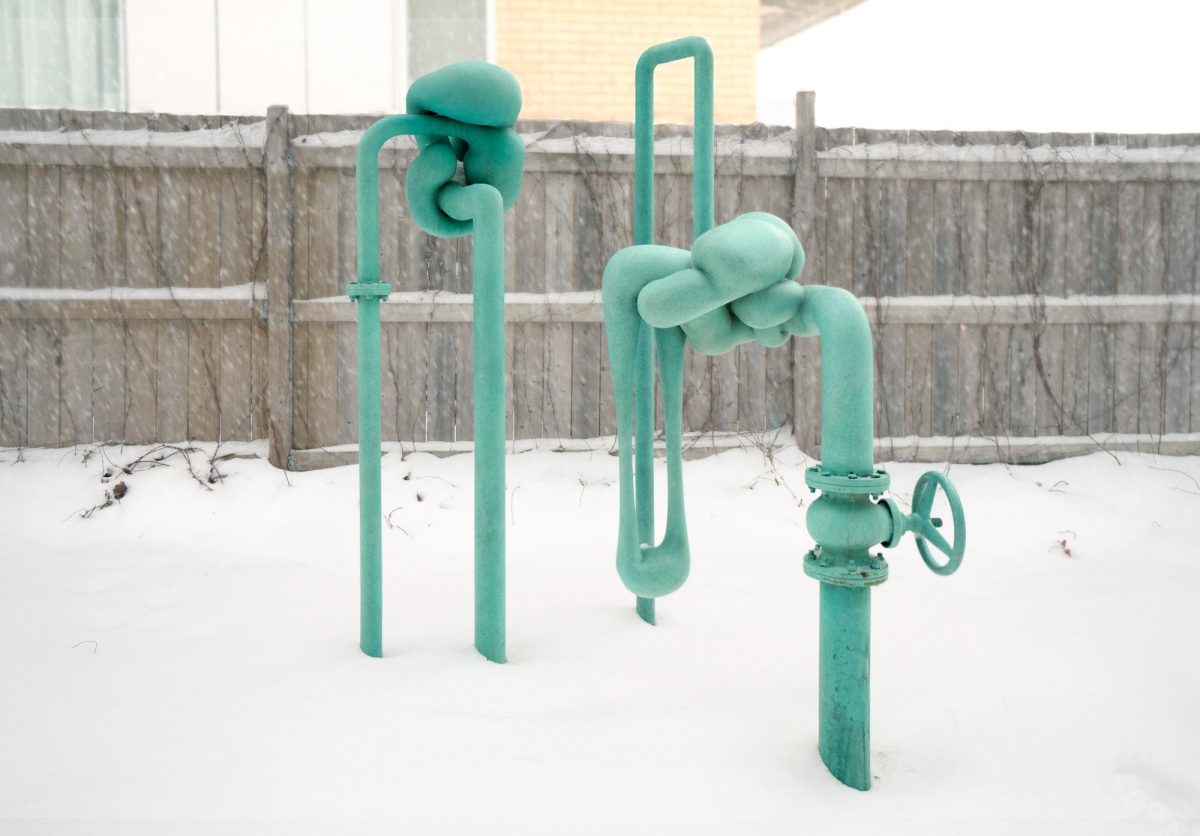
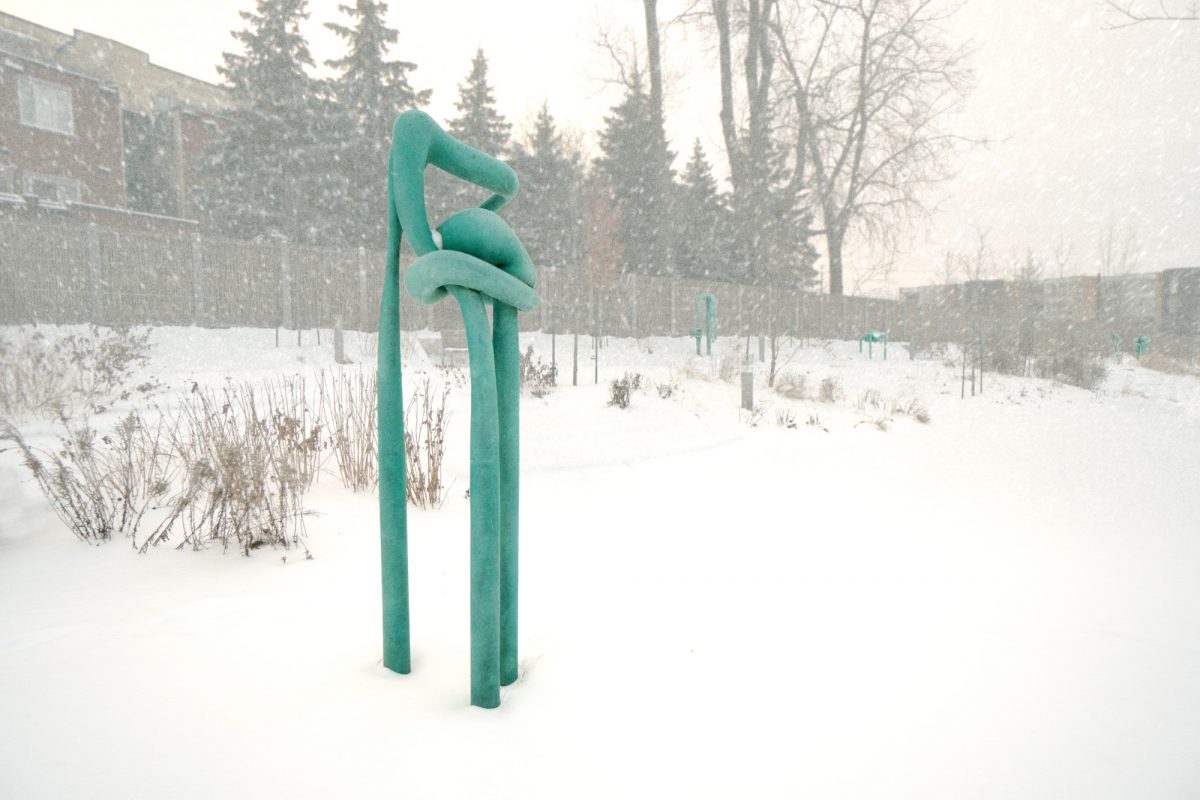
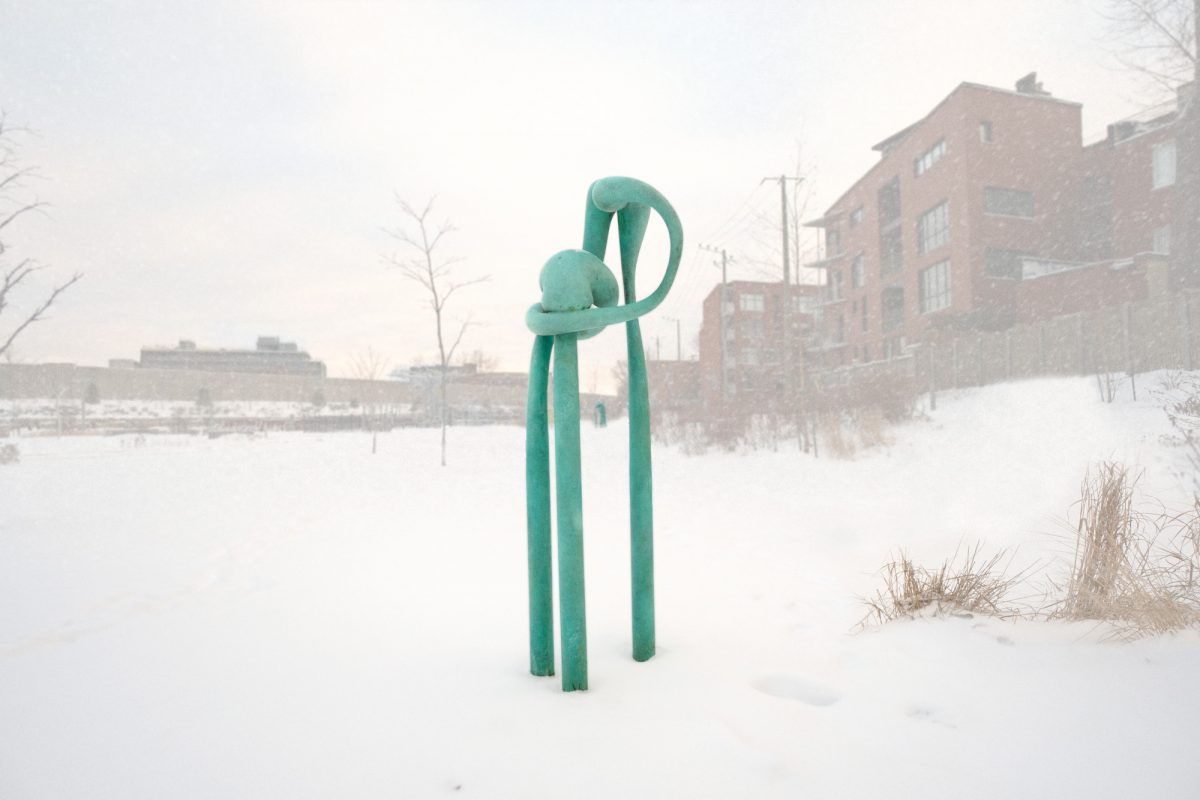
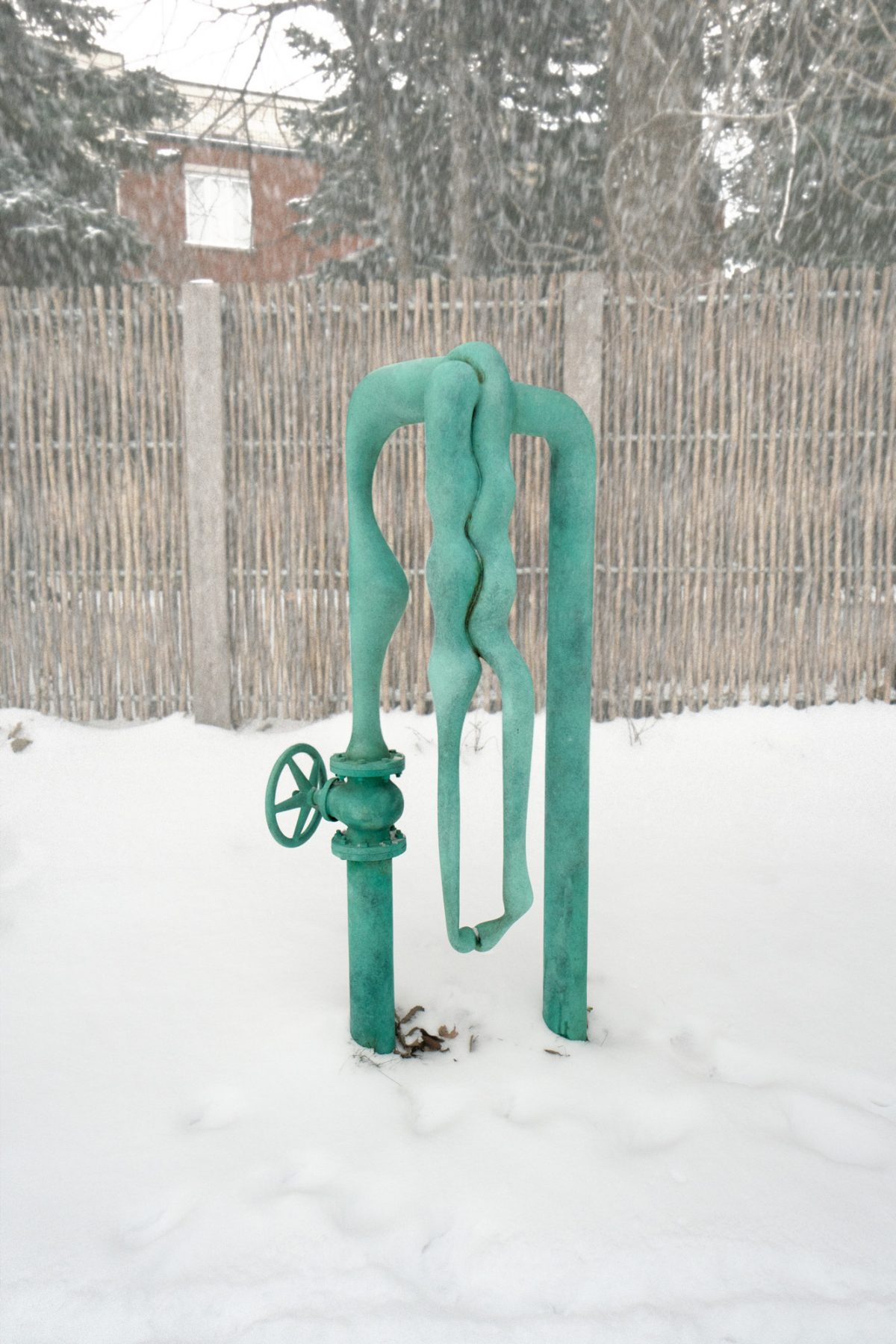
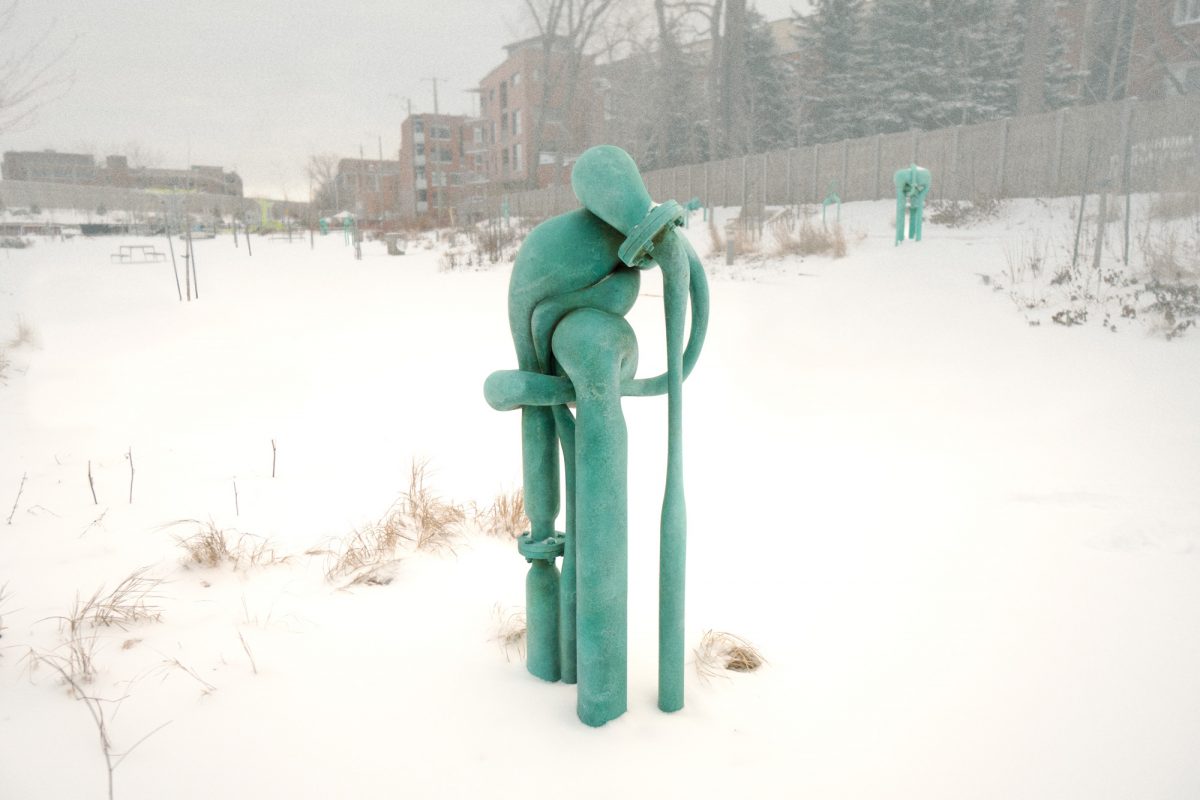
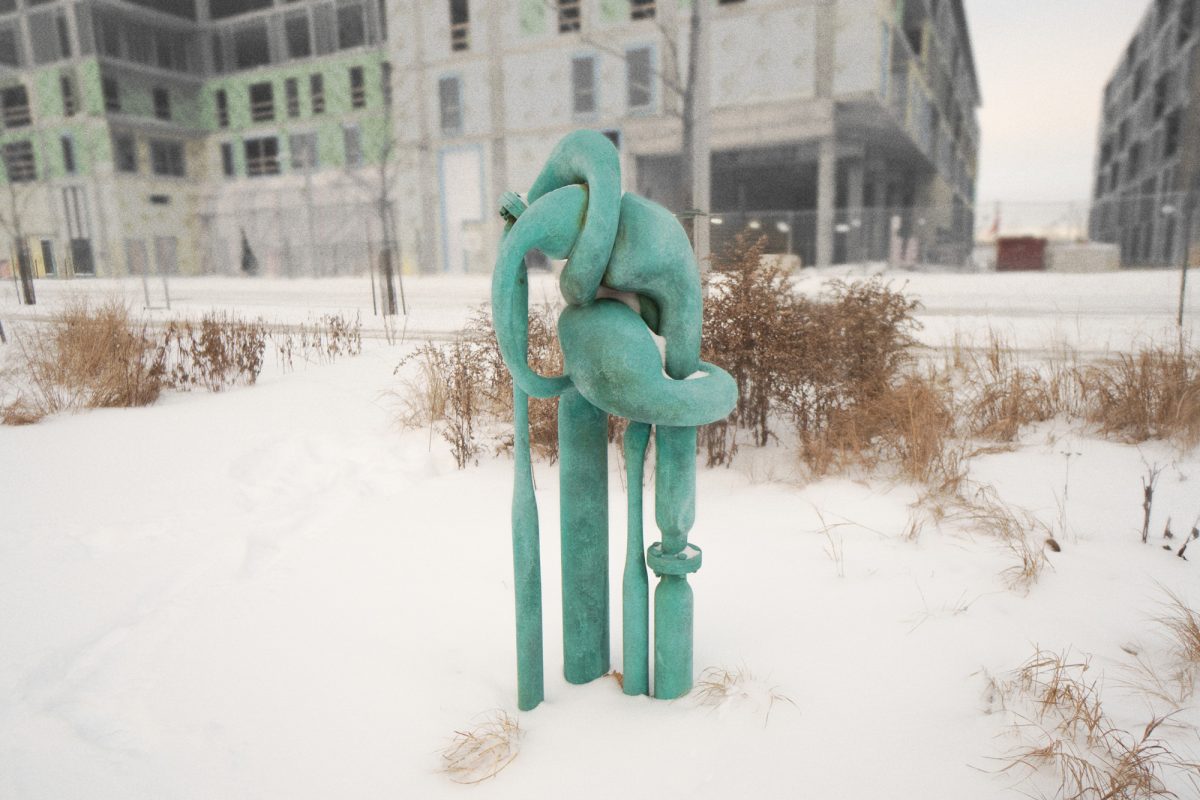
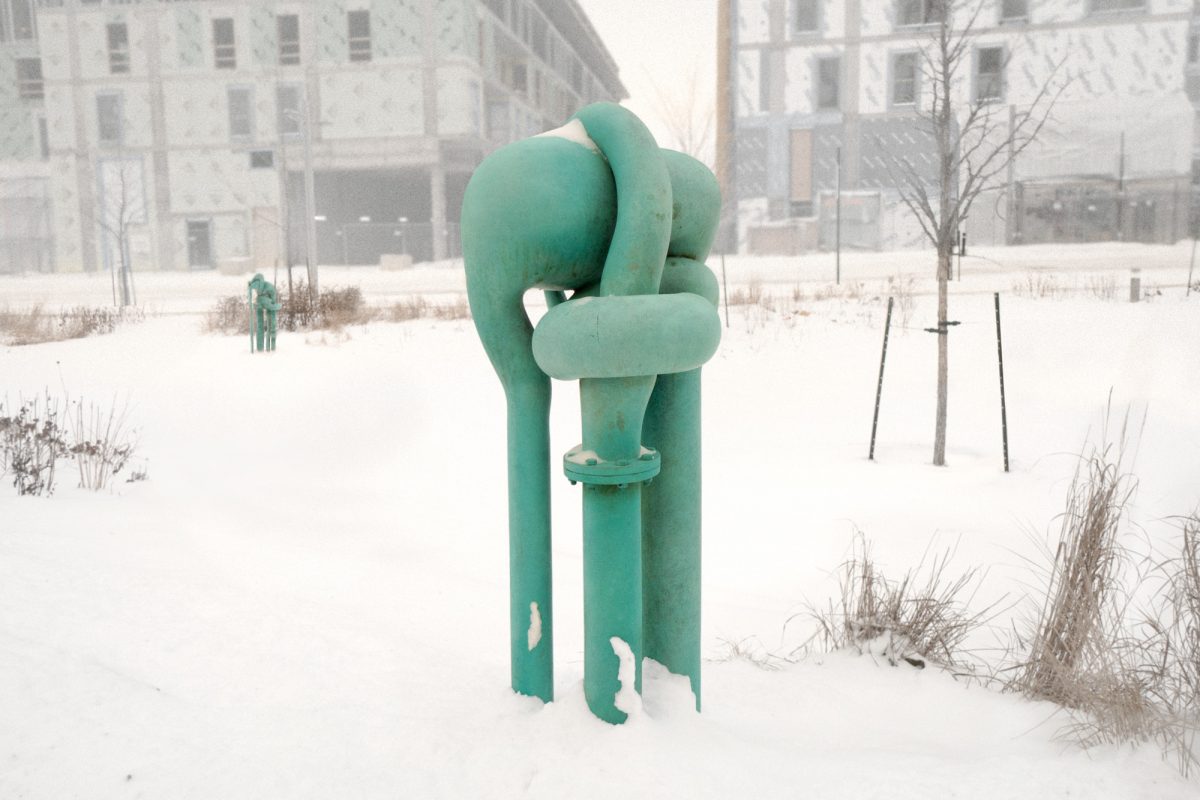
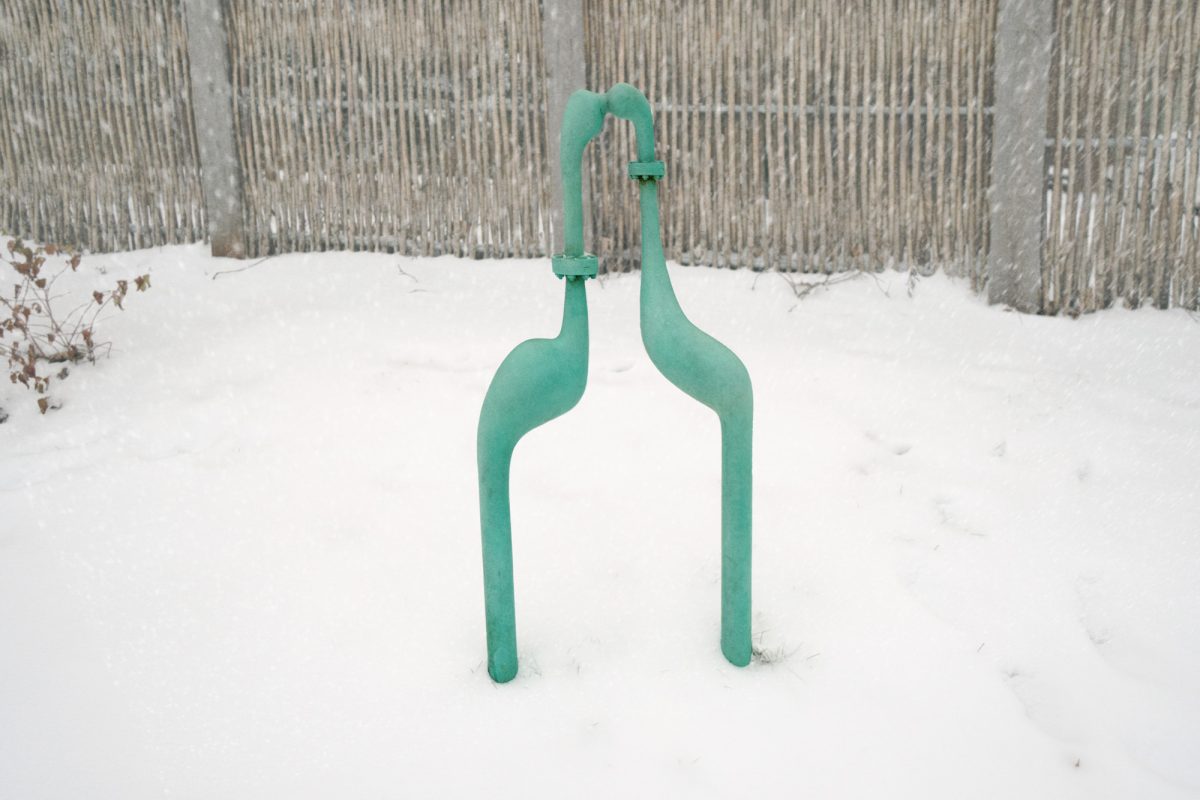
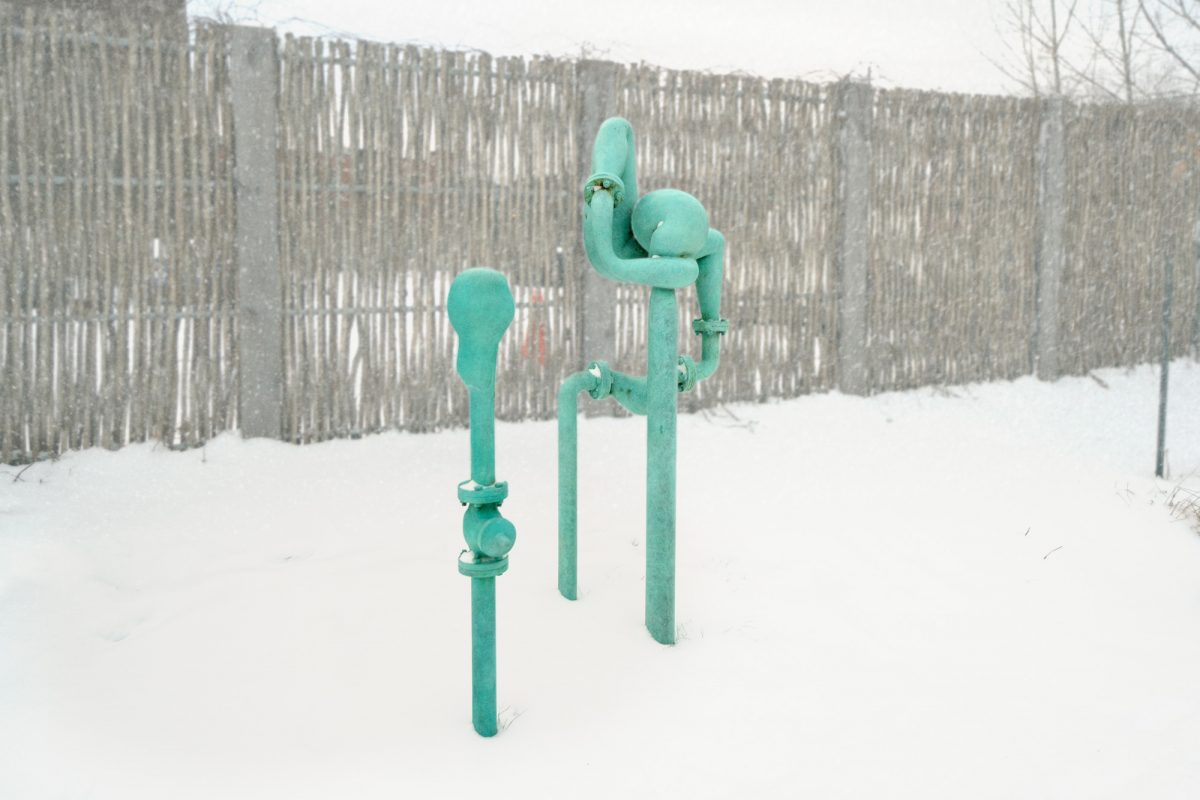
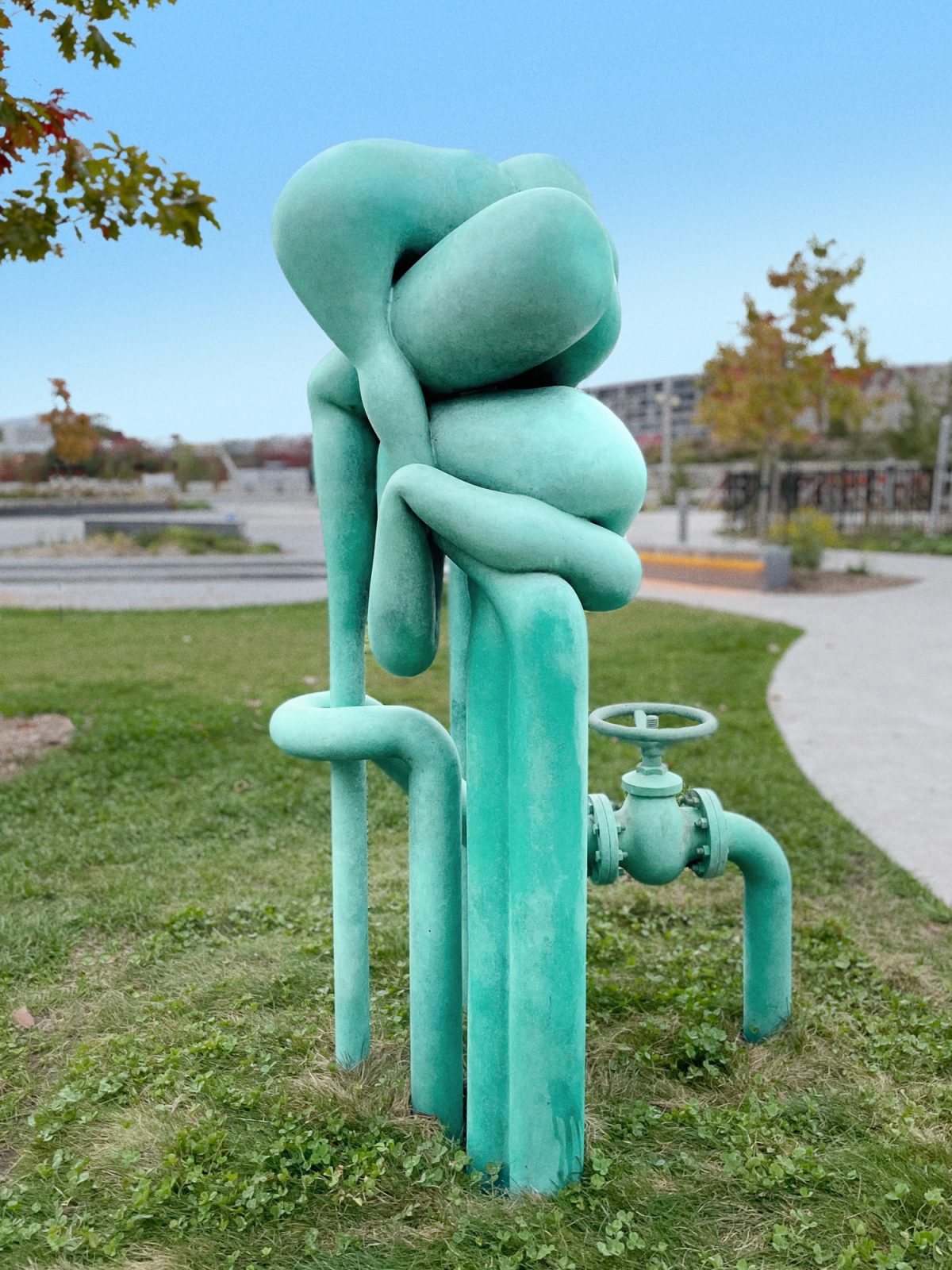
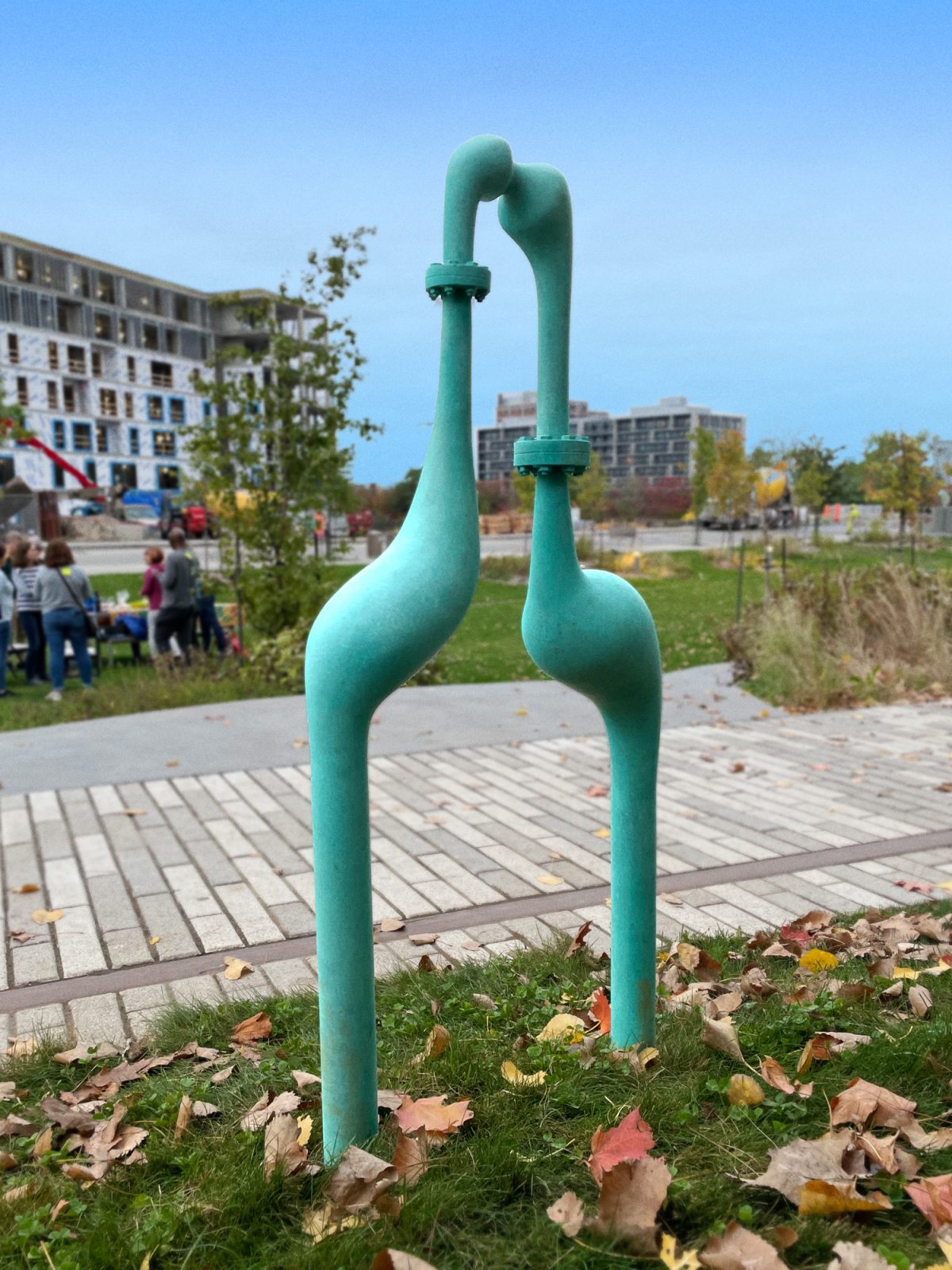
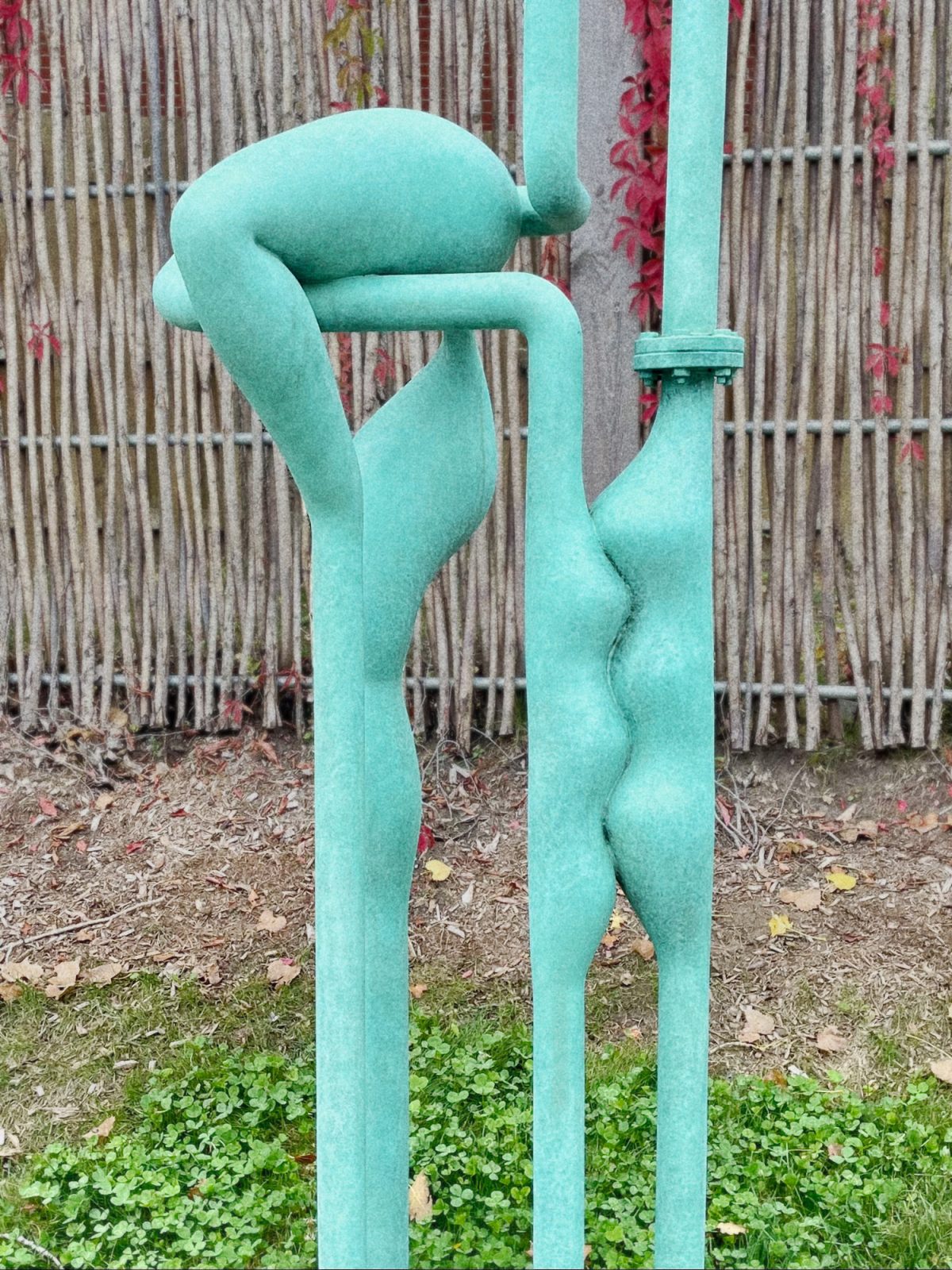
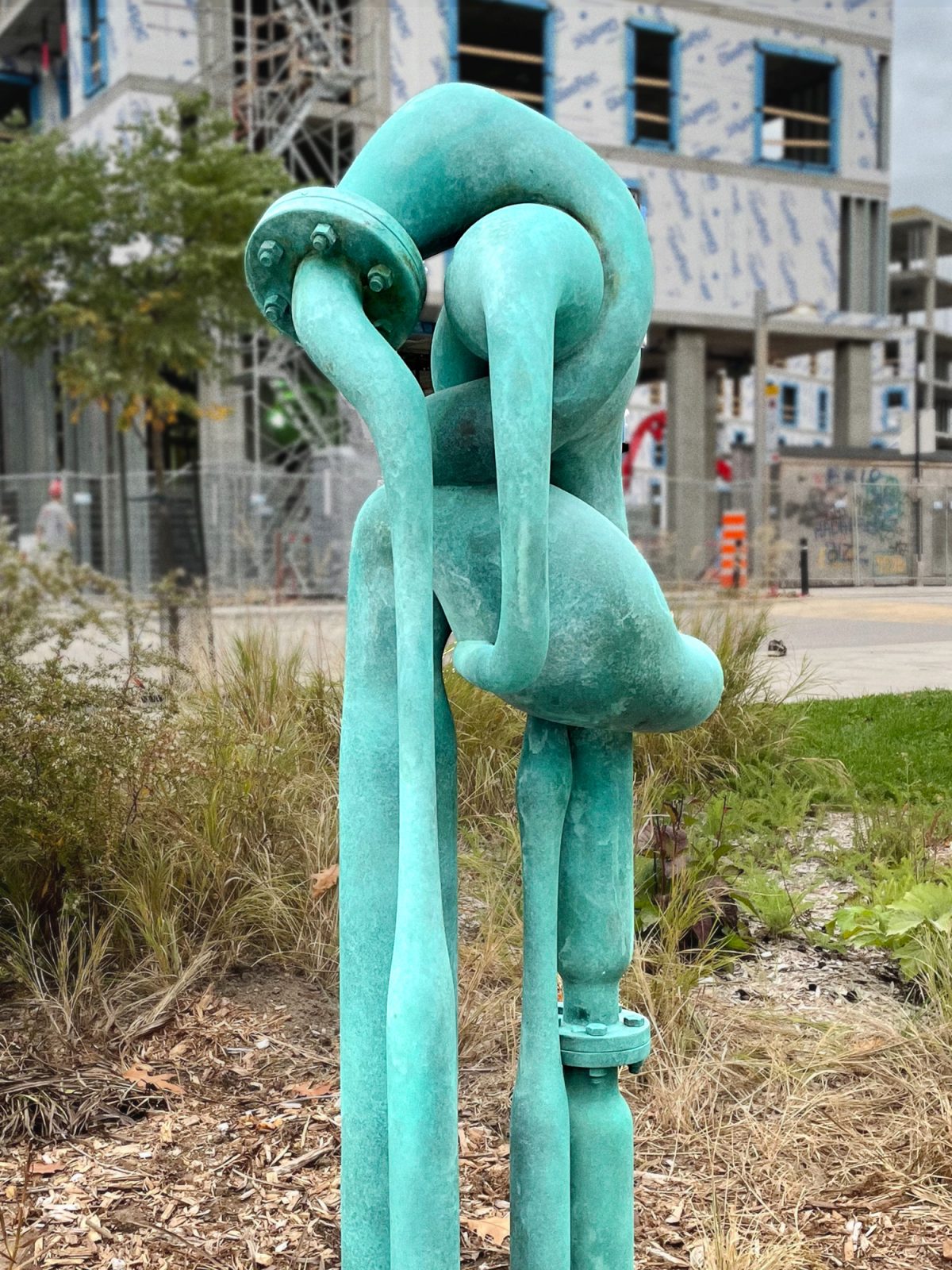
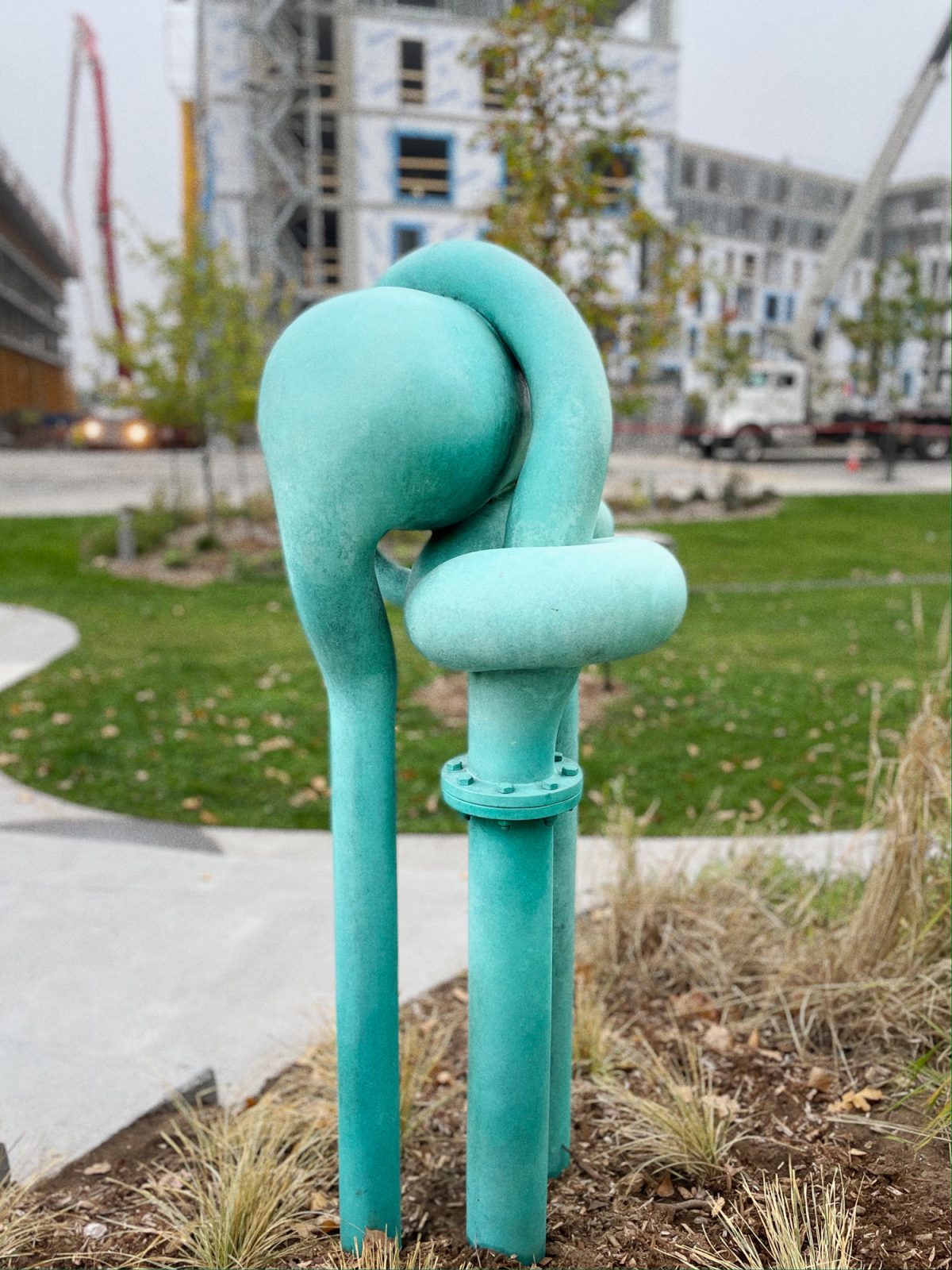
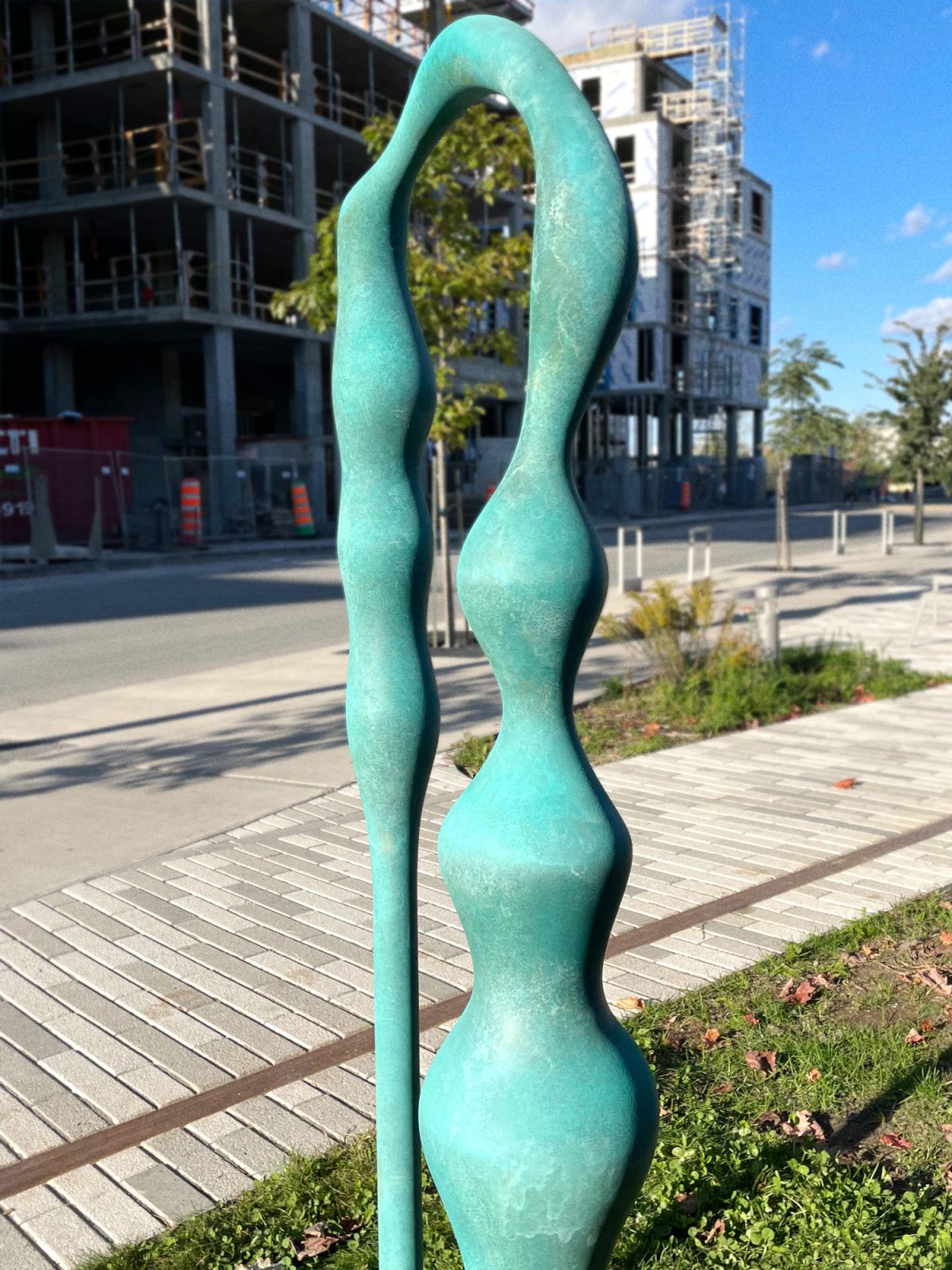
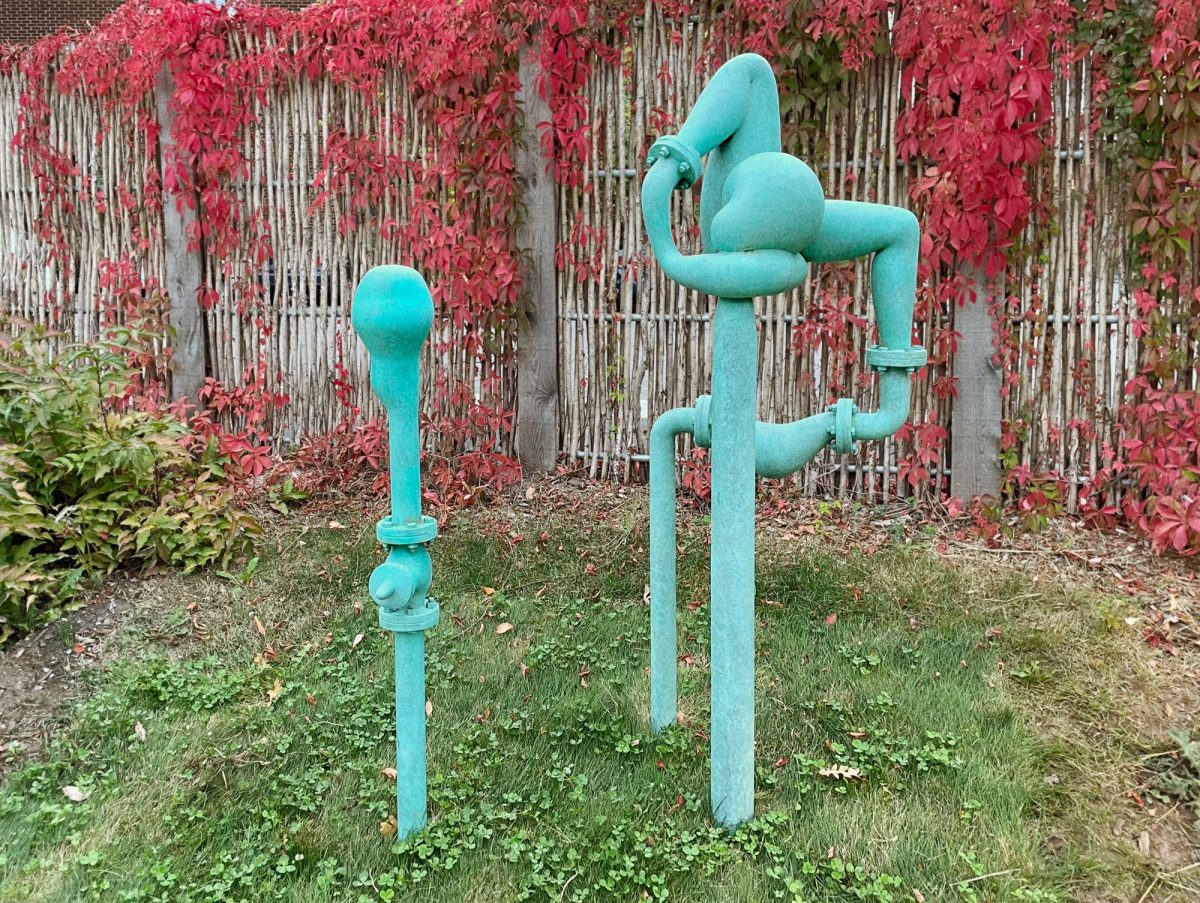
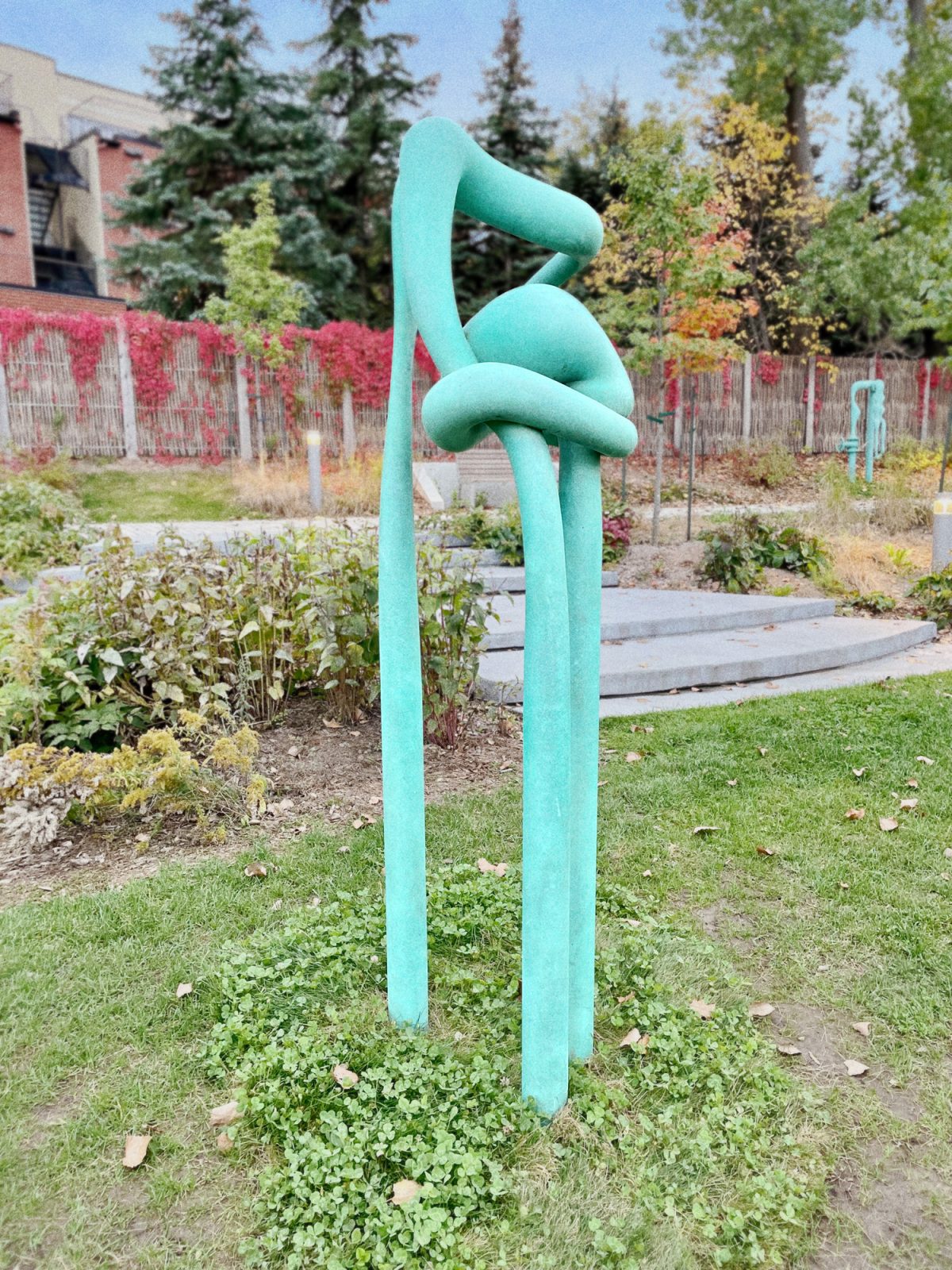
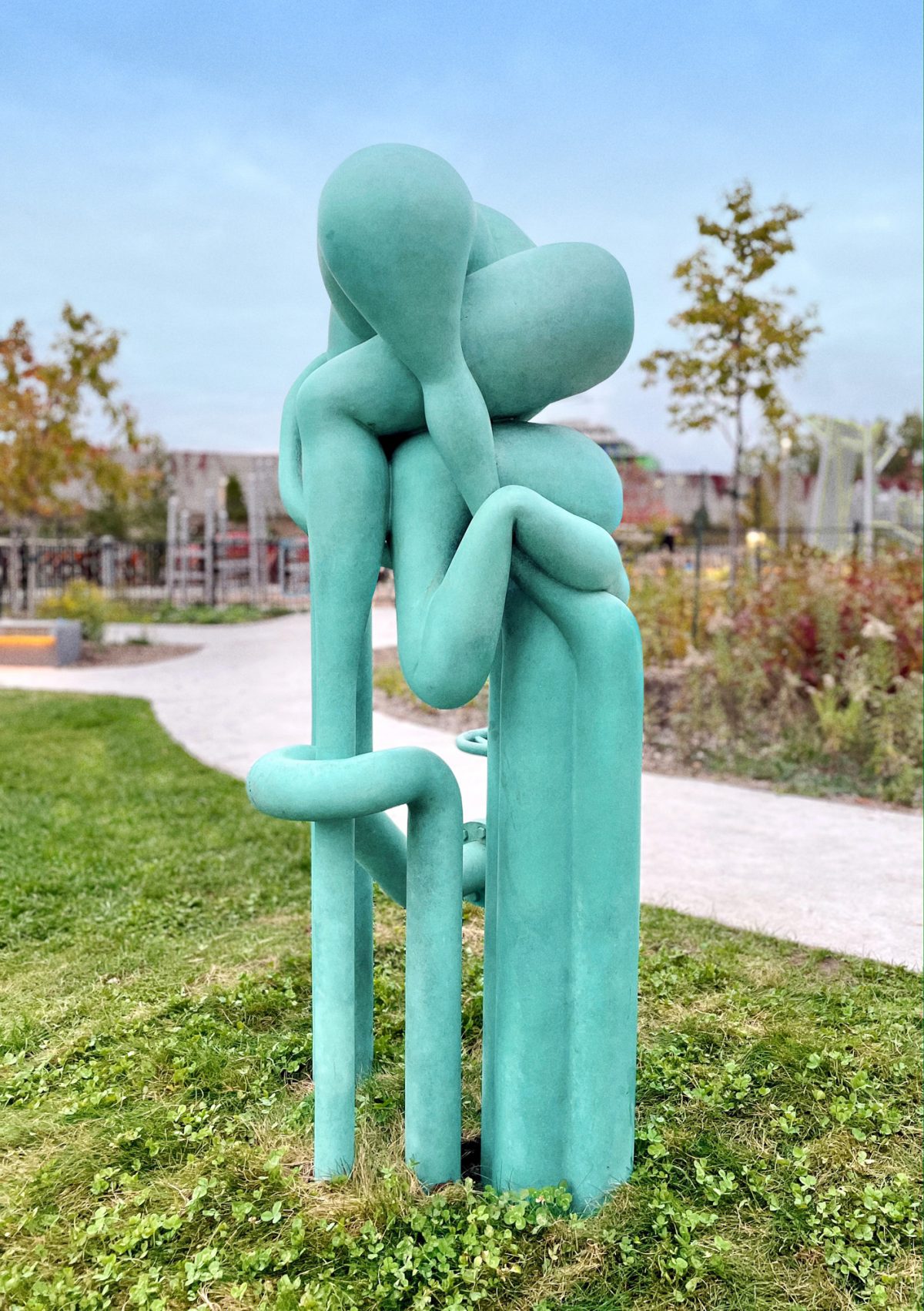
Foundry Atelier du Bronze; Fondation Infravert; Engineer Latéral
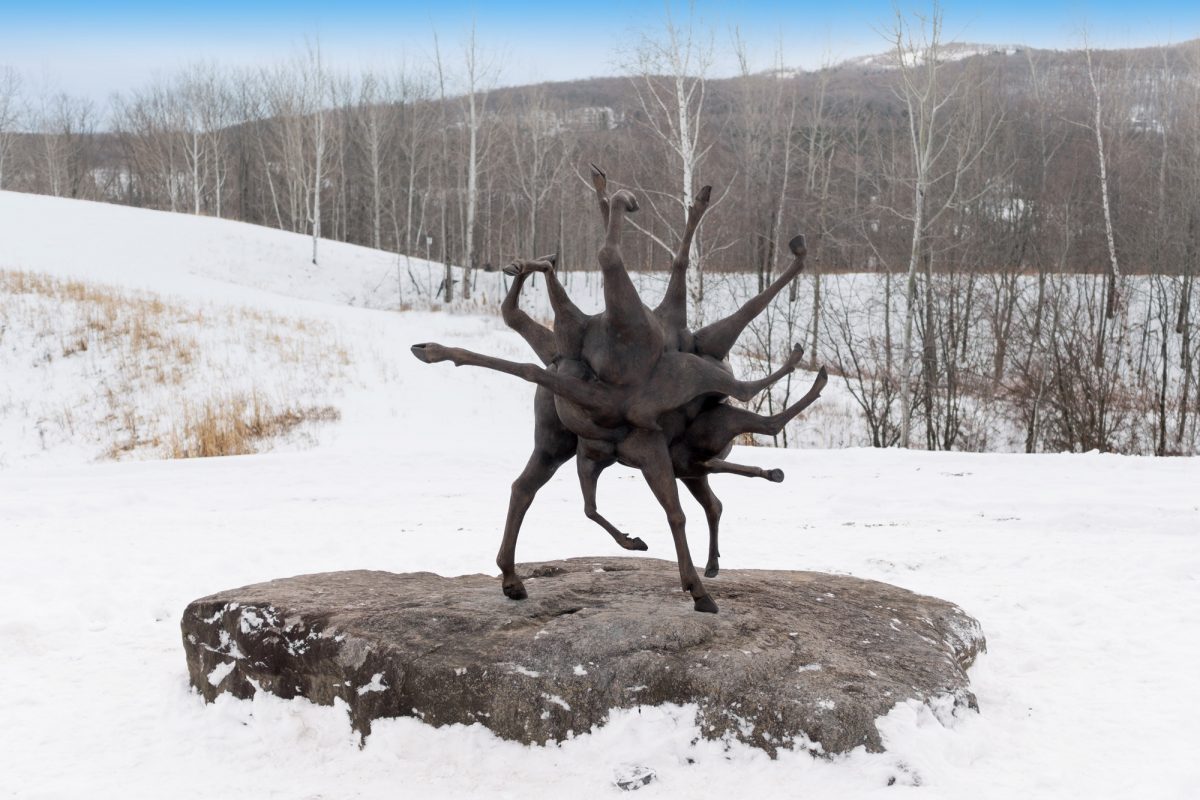
Bestiary [2021]
Bronze installed on a rock
1.6 x 1.2 x 1.8 meter
Parc des Sommets Bromont, Canada
Installed at the entrance of hiking trails in Parc des Sommets in Bromont, Bestiary is a sculpture cast in bronze and perched on a boulder. The sculpture brings together the limbs of different animals, reared up in all dimensions to form a knot at the crossroads of trails. The legs of deer, moose and horses, captured in their movement, lead to the idea of mobility, an invitation to follow the paths that crisscross the landscape and to observe surrounding flora and fauna. Bestiary presents a mysterious hybrid expressing the vital force that drives nature to grow and expand by its extremities spreading in all possible directions.
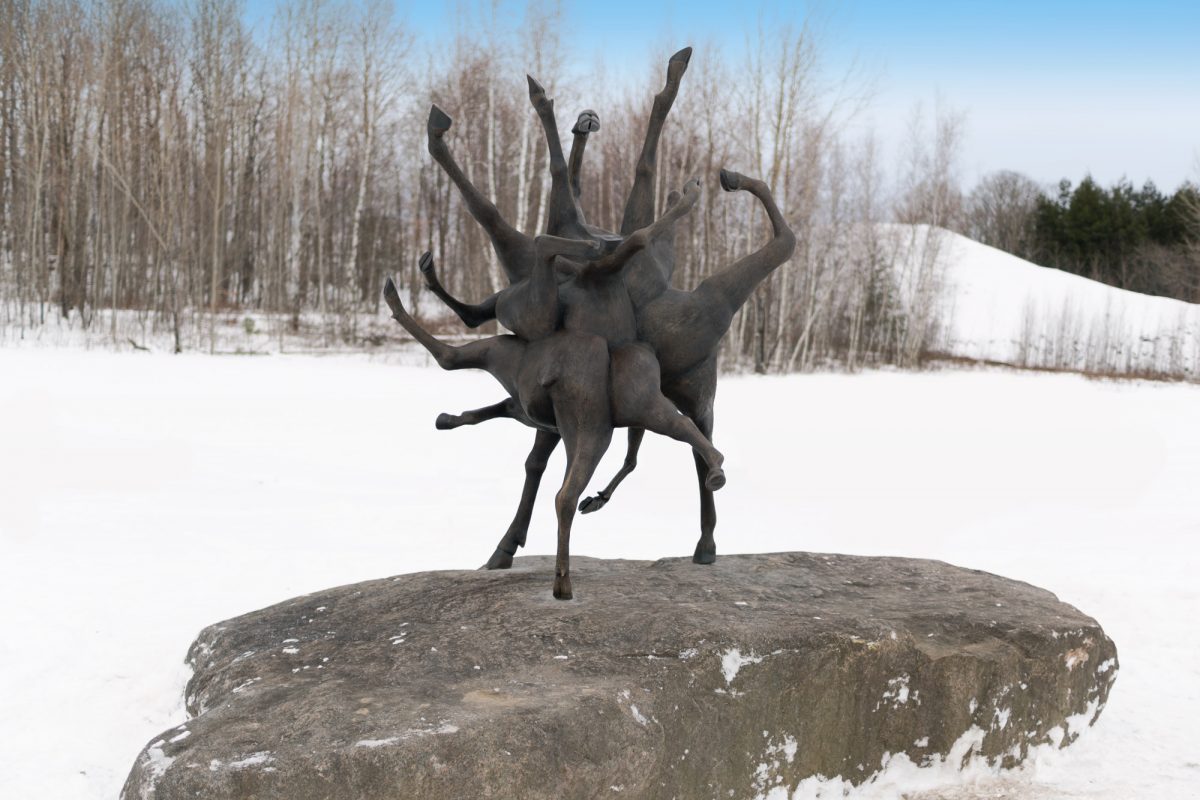
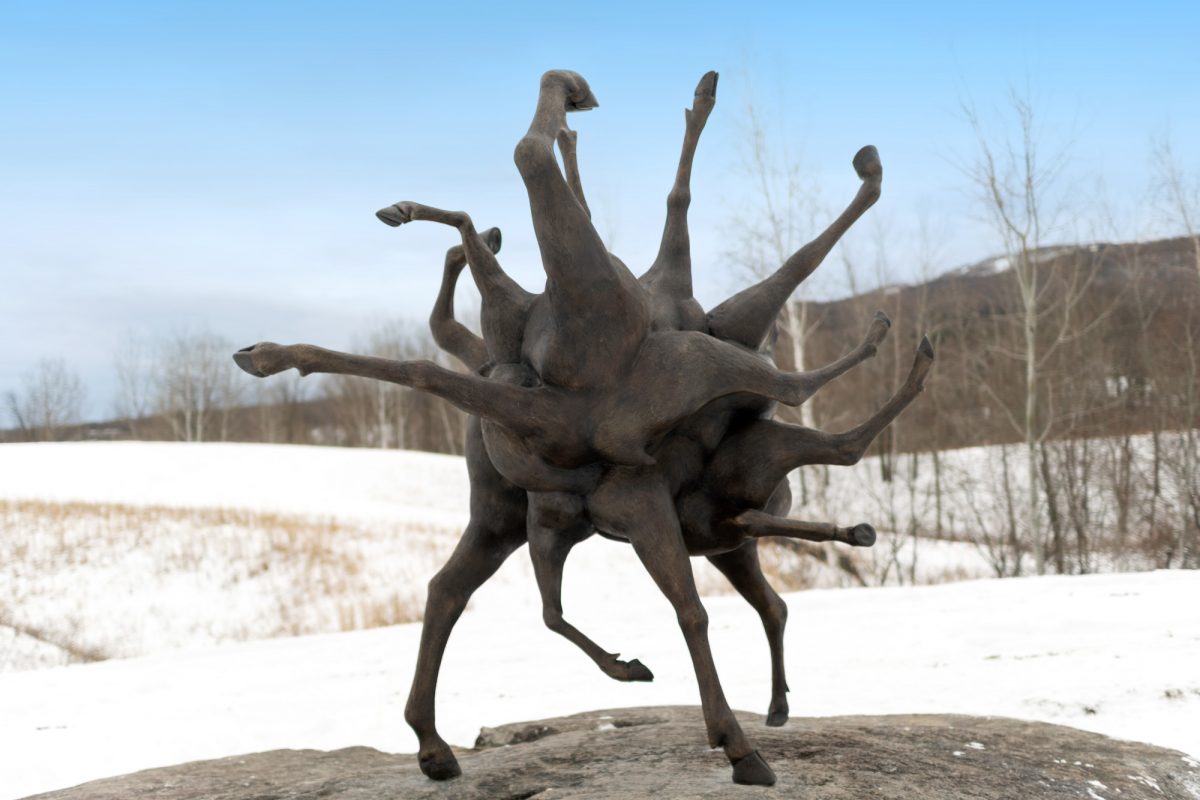
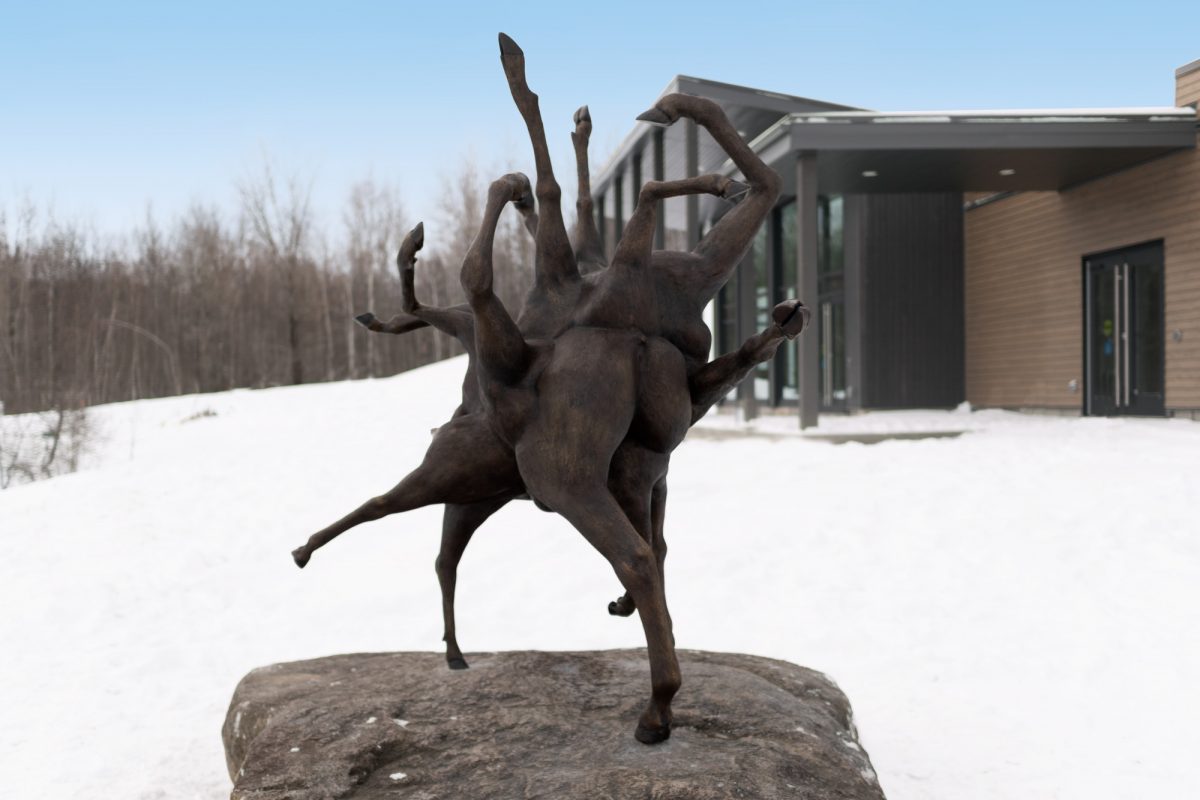
Atelier du Bronze (fonderie); Latéral (ingénieur); Anne de Broin et Dexter Barker Glenn (assistant)
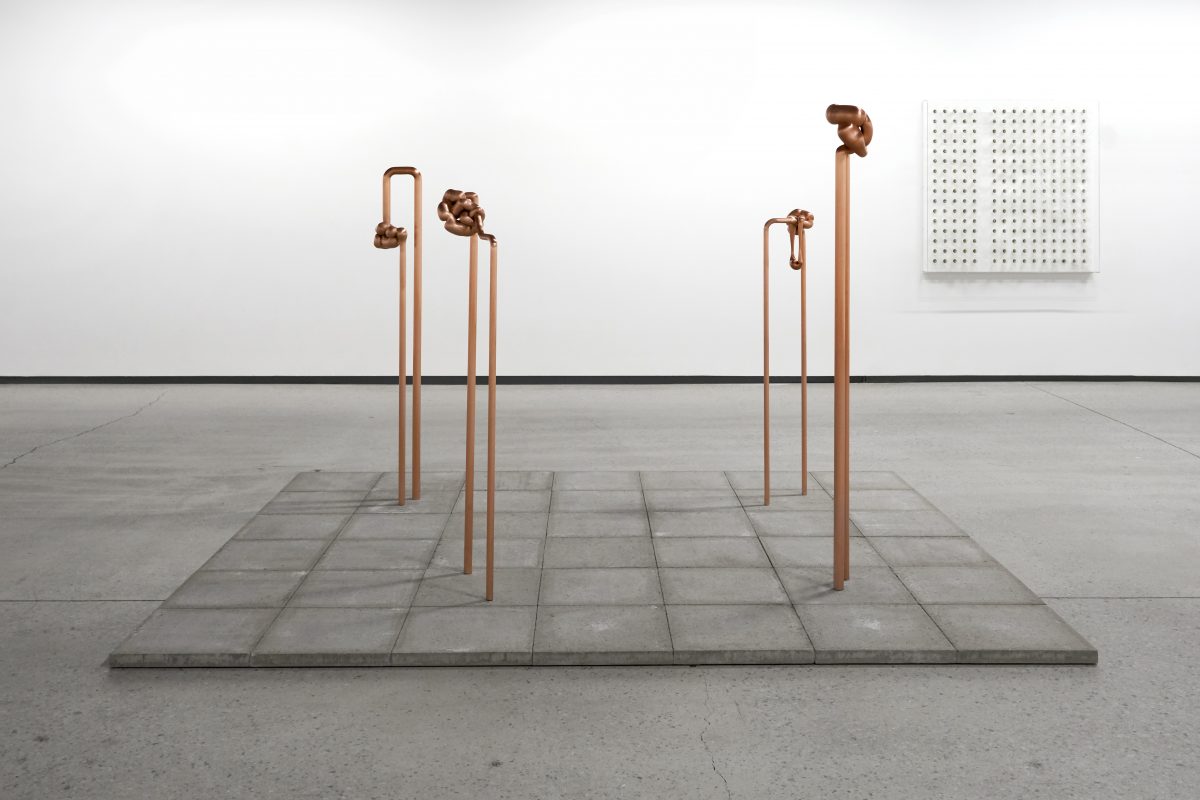
La conduite des conduites
Galerie Division [2018]
This exhibition proposes an interplay between the modeling of behaviour (the term “conduites” in french means ‘pipe’ but also ‘behaviour’ – in this case of objects or bodies) and the channeling of emotional responses, flows and energy. Using common objects – furniture, pipes, flanges, and light bulbs – the artist defamiliarizes technical systems, deforming, rupturing or boring holes in otherwise recognizable forms and encouraging the viewer to untangle each object’s contradictions. The curves and sinuosities of his conduits pit dynamic circulation against the sight of resistance or dissipation. Disturbing the expectations of industrial systems and their promise of efficiency, optimization and innovation, the artist imagines the mechanical differently from the one we encounter in our daily life. The works open gaps in the world, introducing flaws and spaces freed from the causality shaping our relationship with design. Sentient bodies lurk behind these ostensibly technical objects. While we expect them to function and produce, the unpredictable assemblages escape the world of things in search of new and sensitive possibilities.
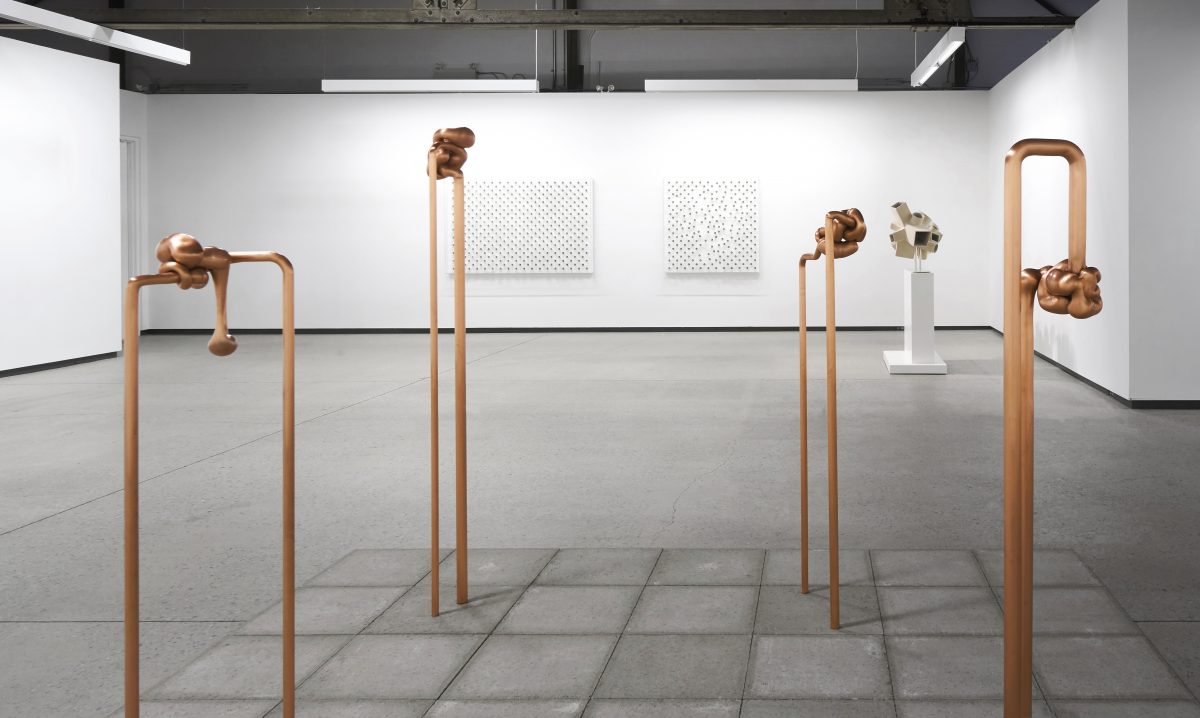
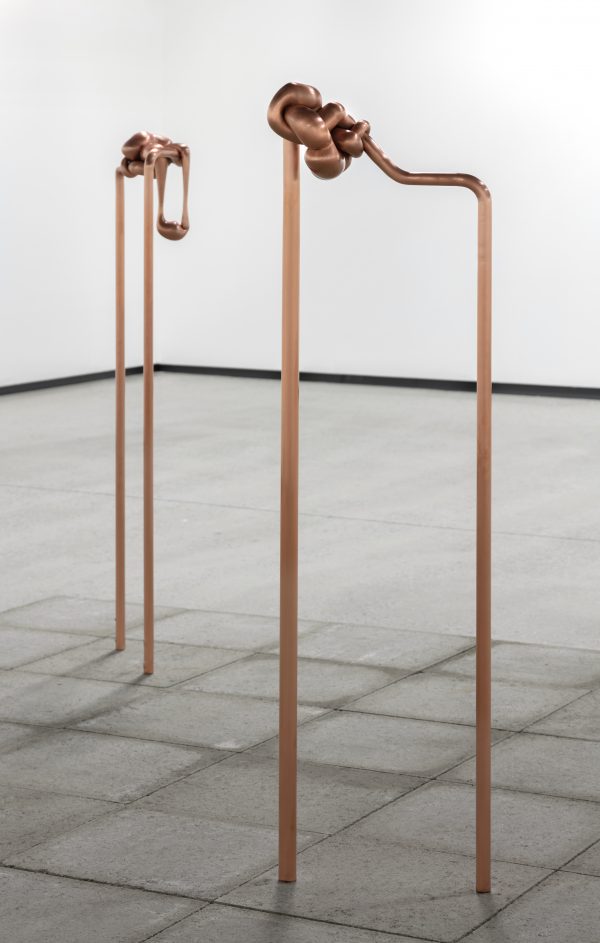
Anomaly IV et III [2018]
Melted bronze, galvanized steel and copper plating, 280 x 280 x 140 cm
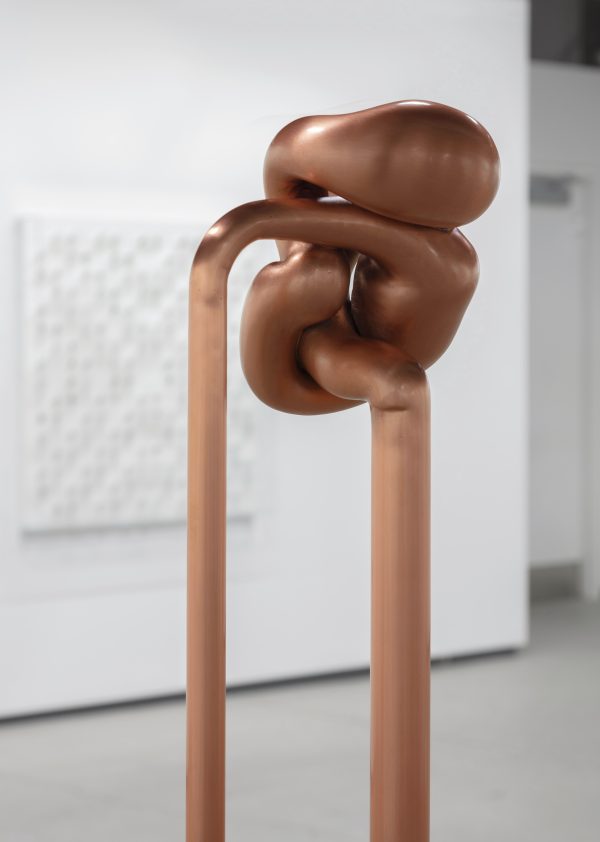
Anomaly II [2018]
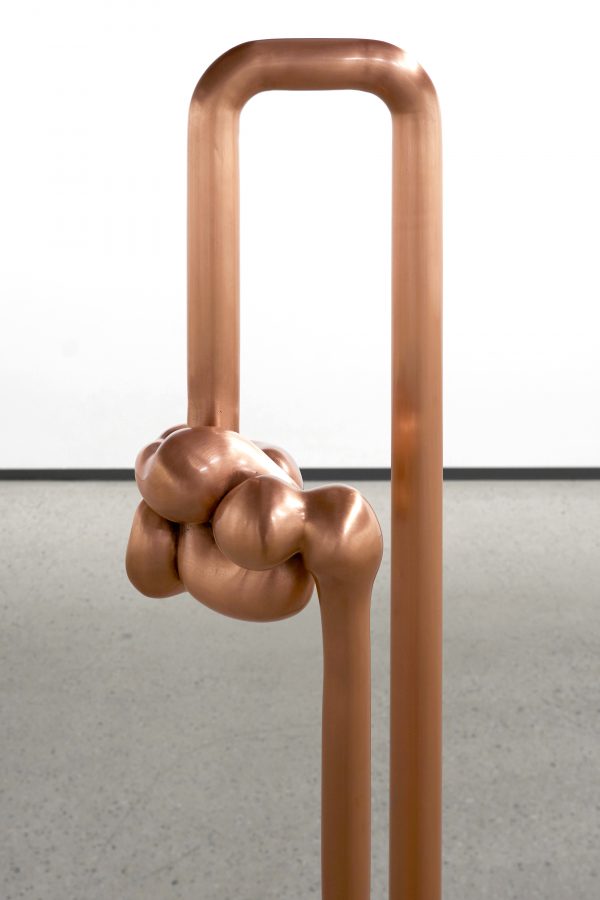
Anomalie I [2018]
 à
à
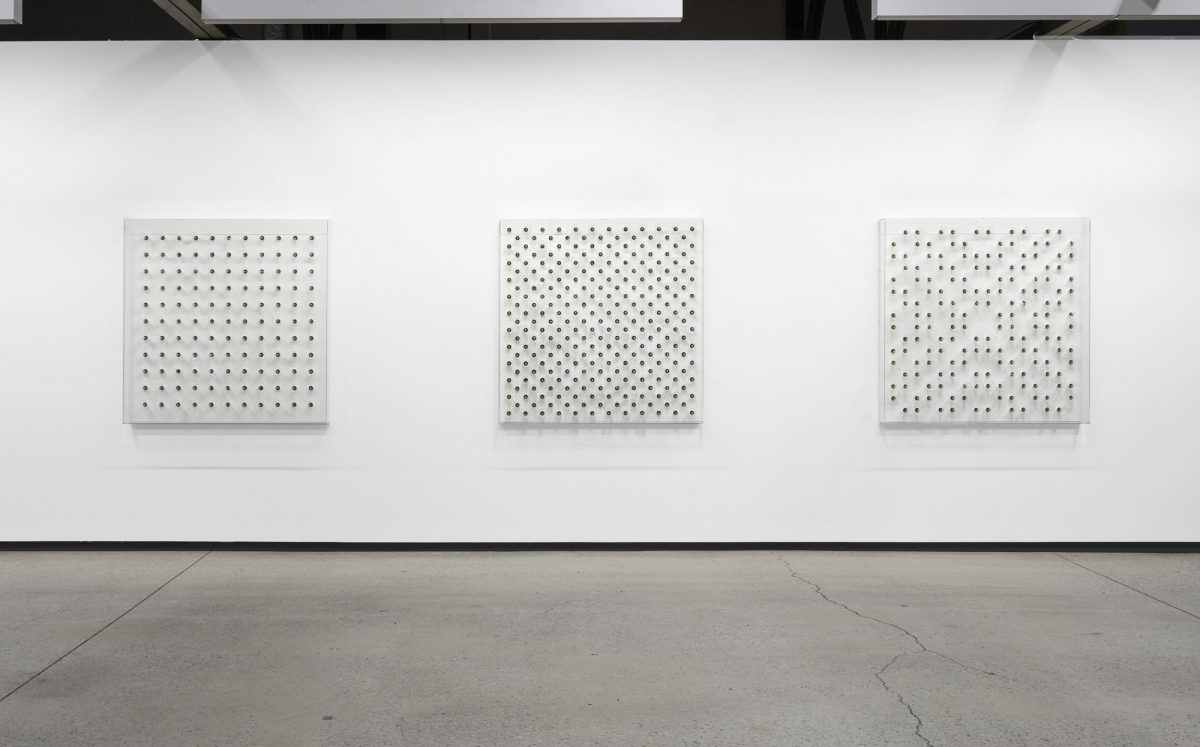
Twilight #121, #265 and #168
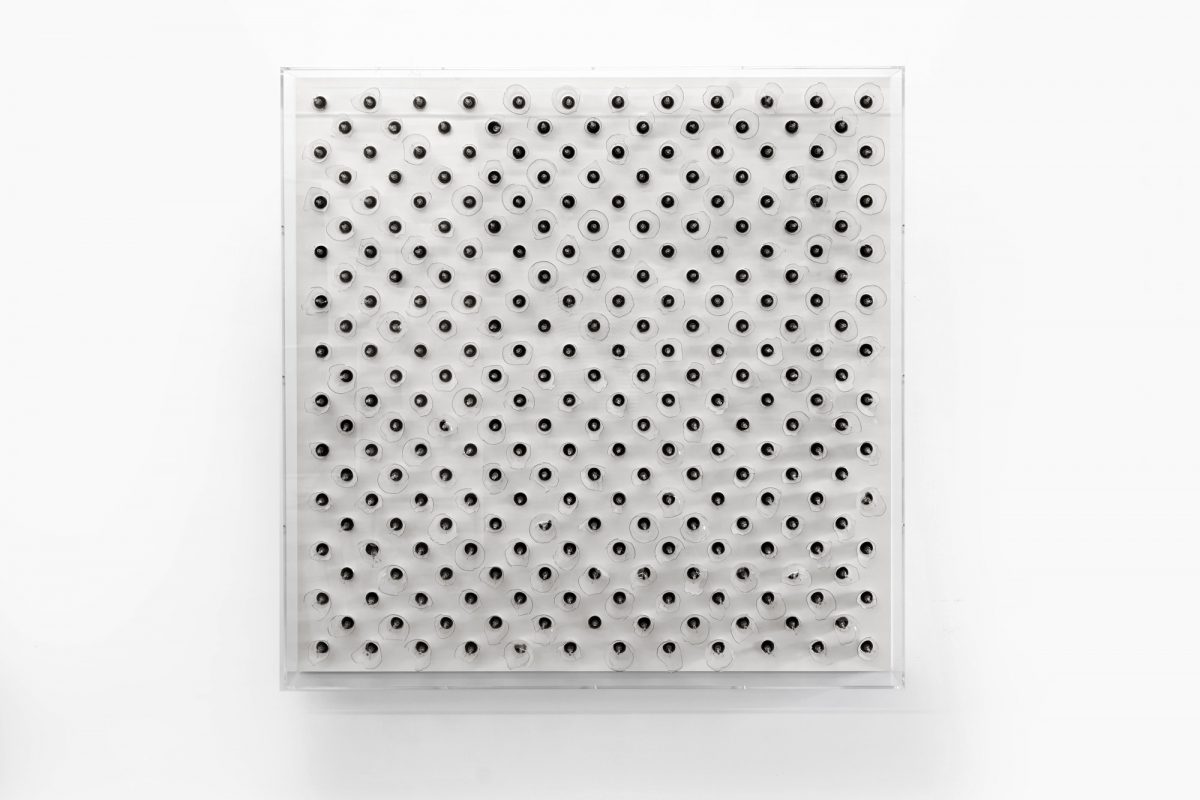
Twilight #265
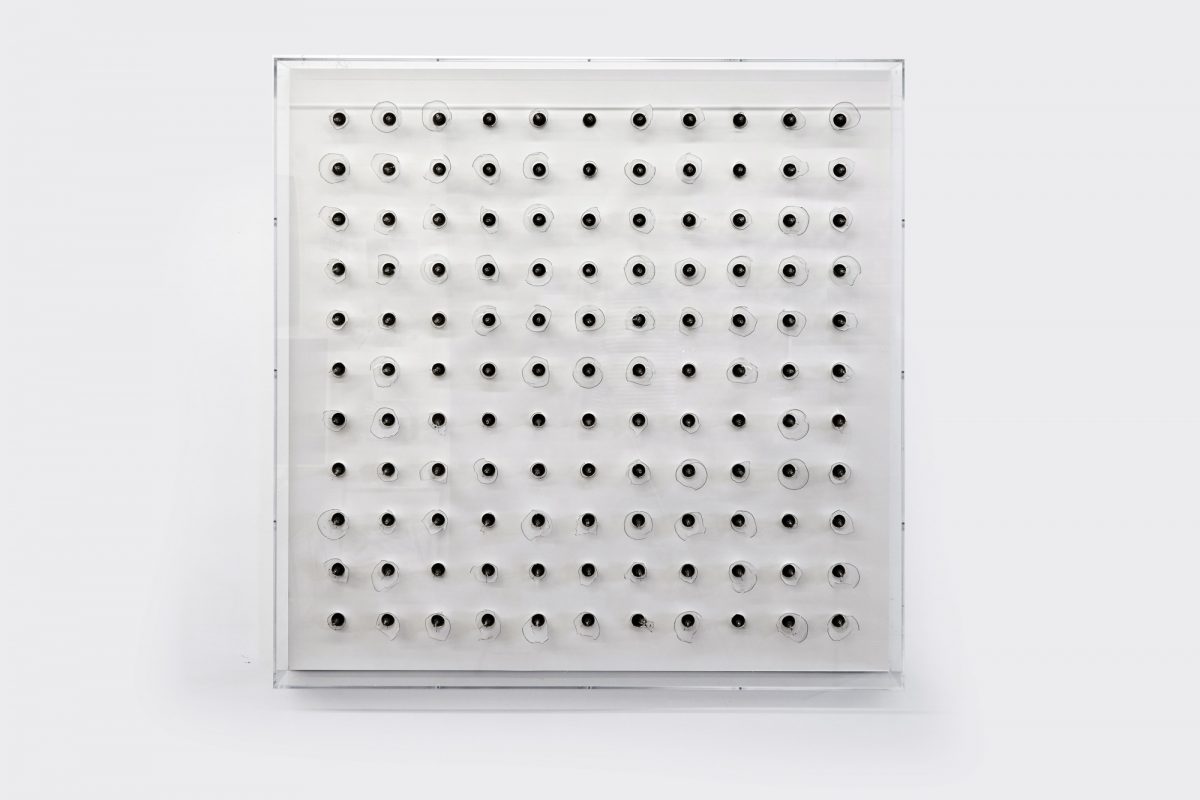
Twilight #121
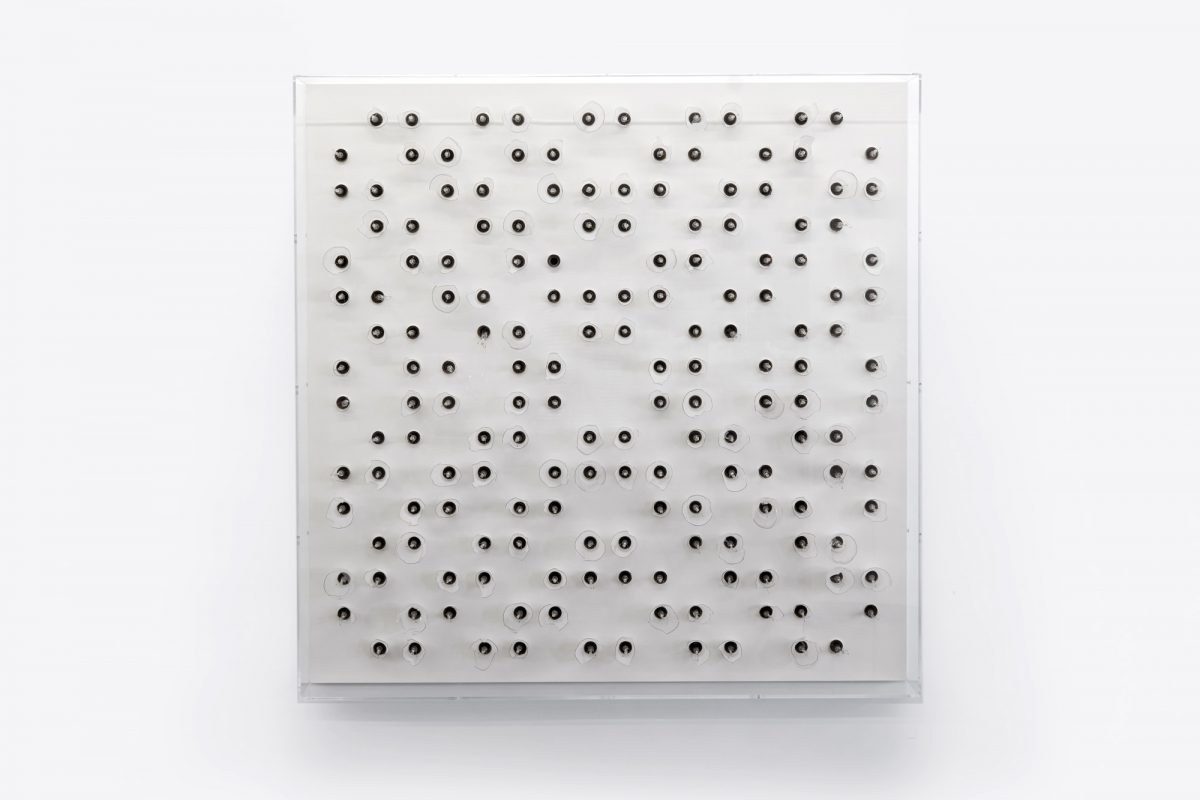
Twilight #168
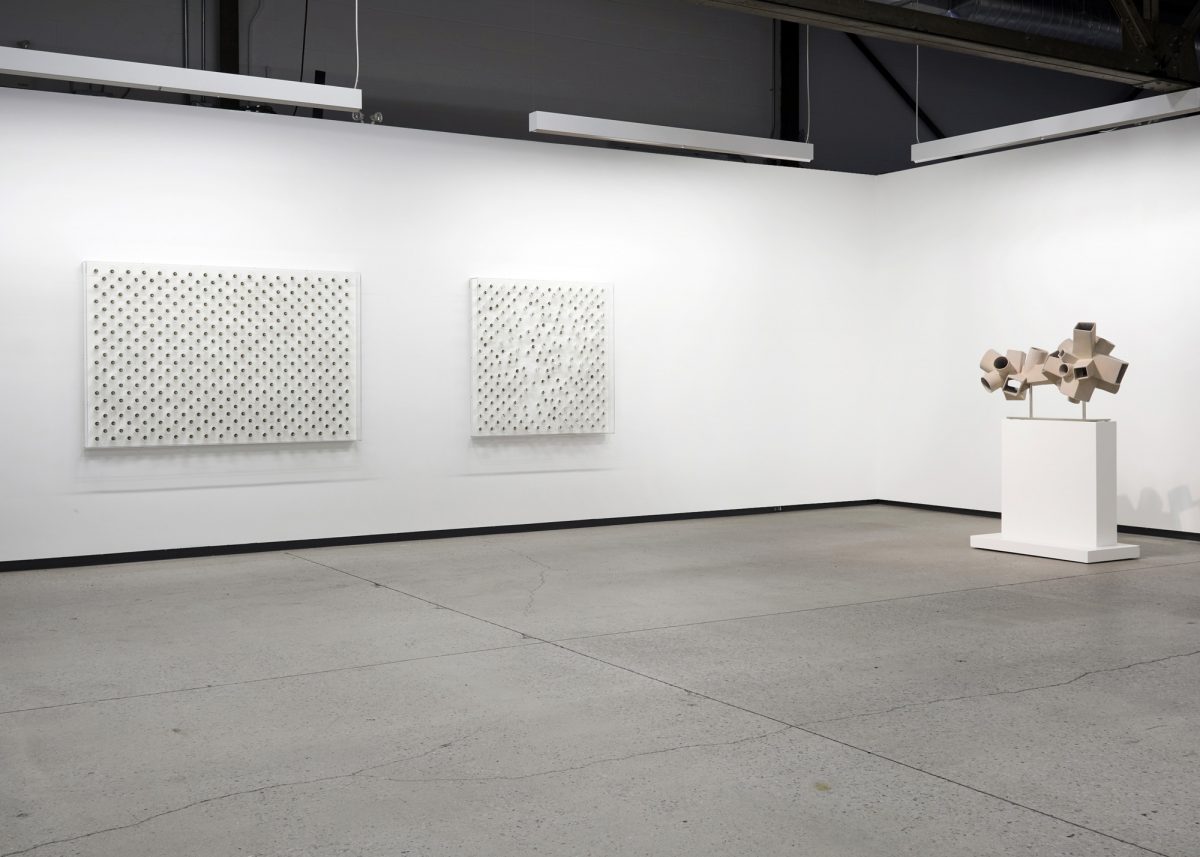
Universal Plug and Play [2018]
Polymer, fiberglass, epoxy, nylon fiber, base, 126 x 52 x 64 cm
Inspired by a network protocol of the same name used to facilitate the connection of peripheral devices, the sculpture is similar to a universal joint providing the opportunity for pipes of different shapes to connect.
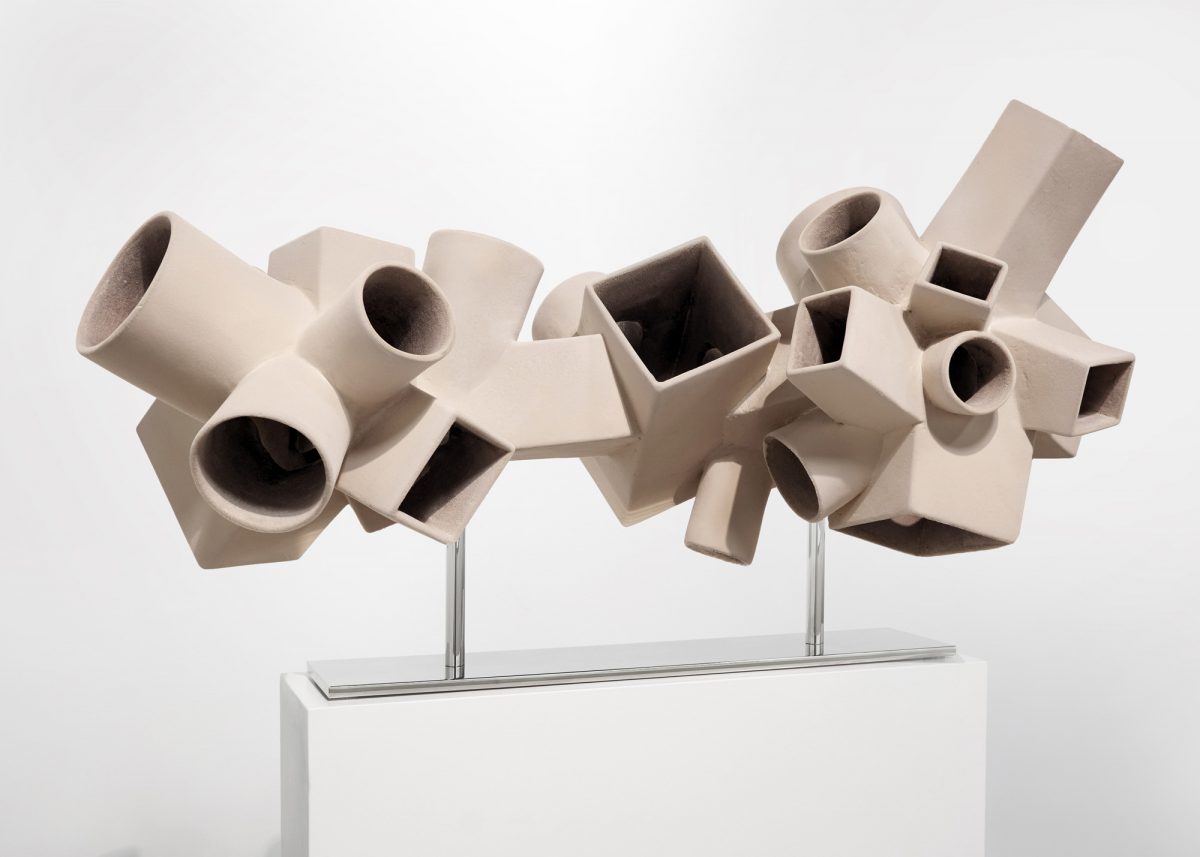
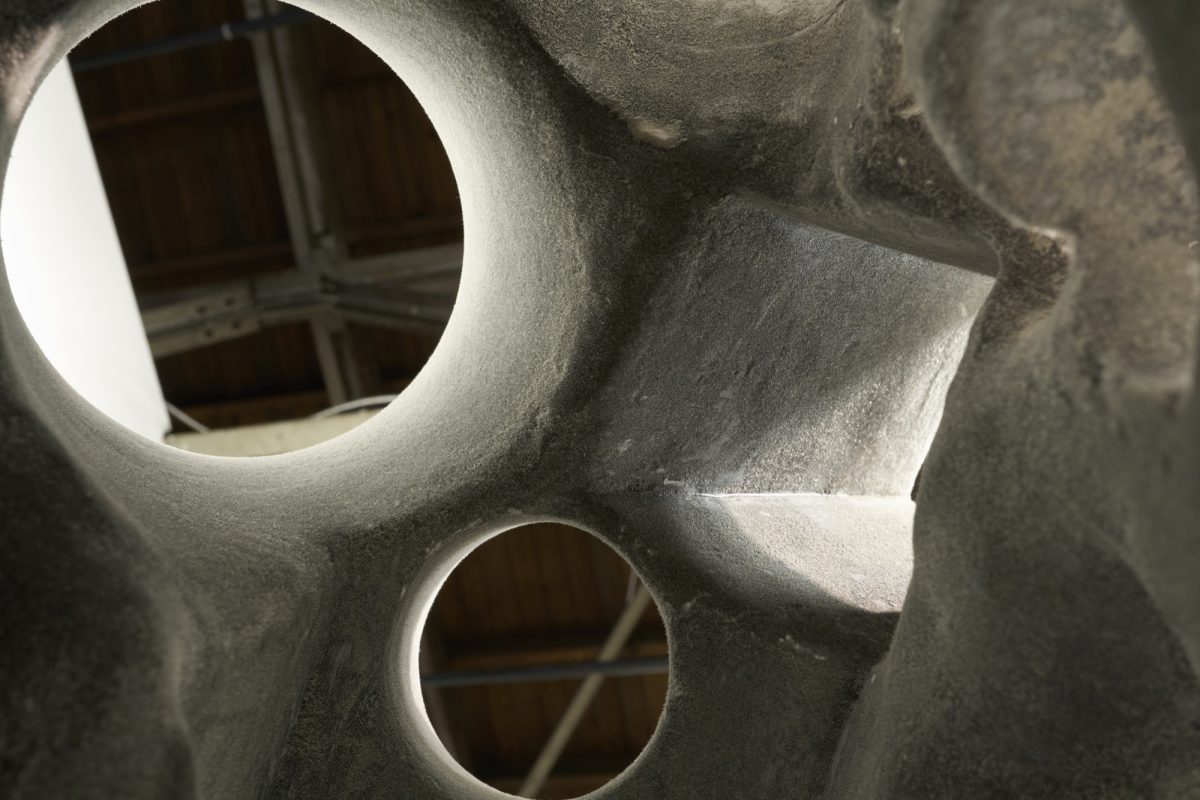
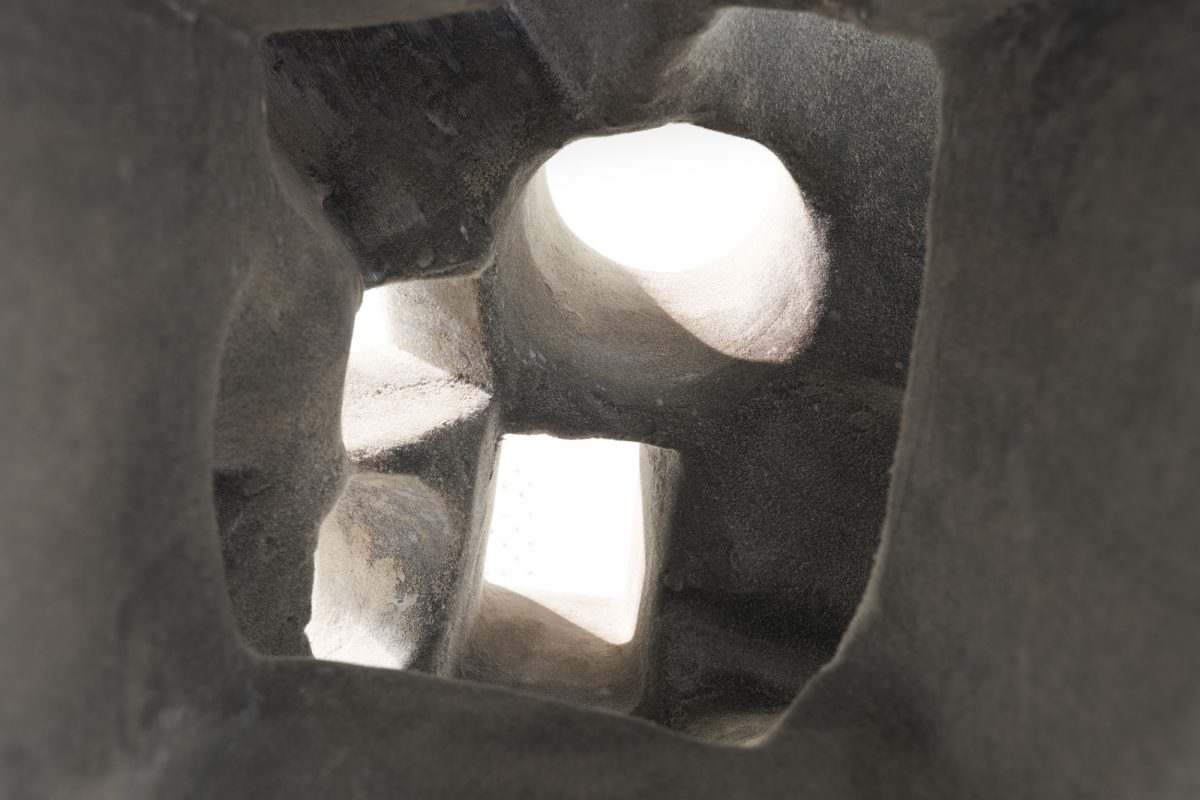
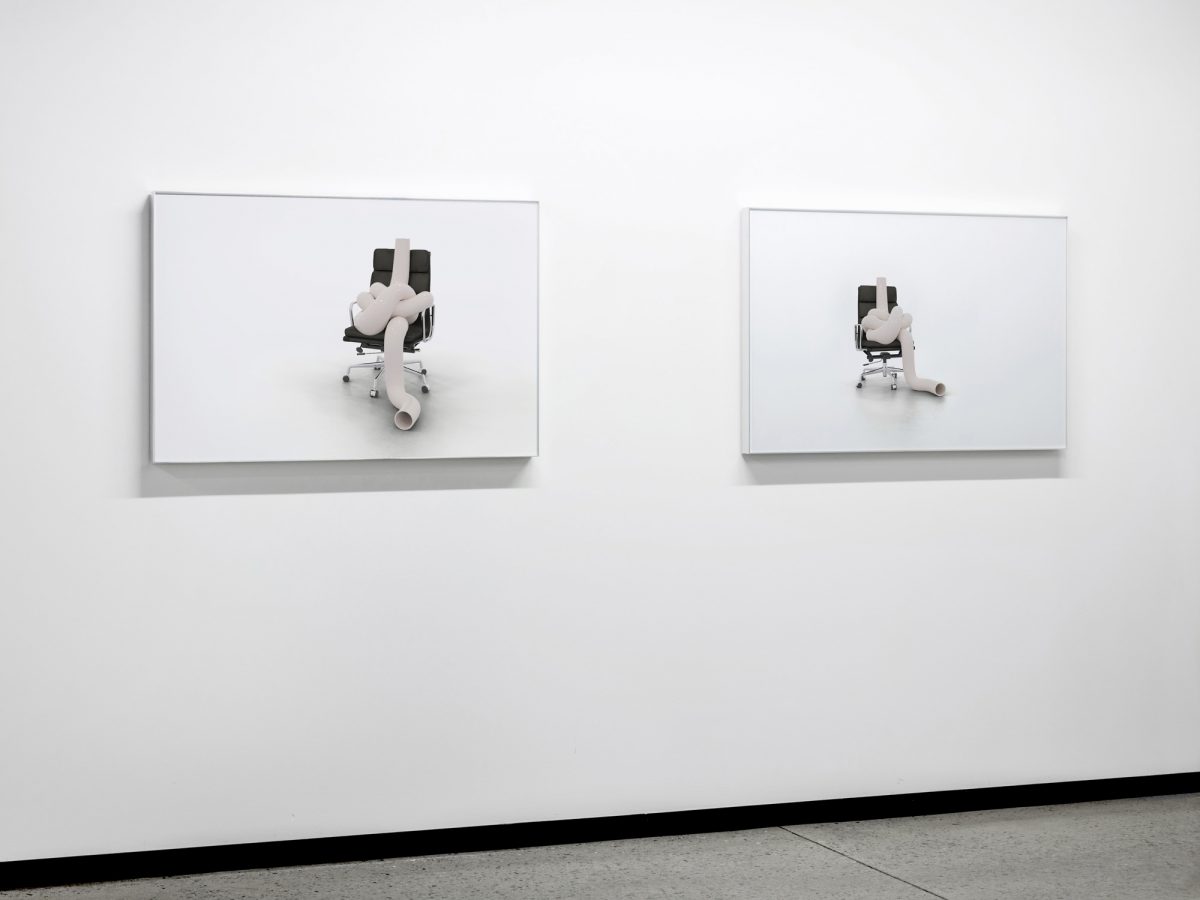
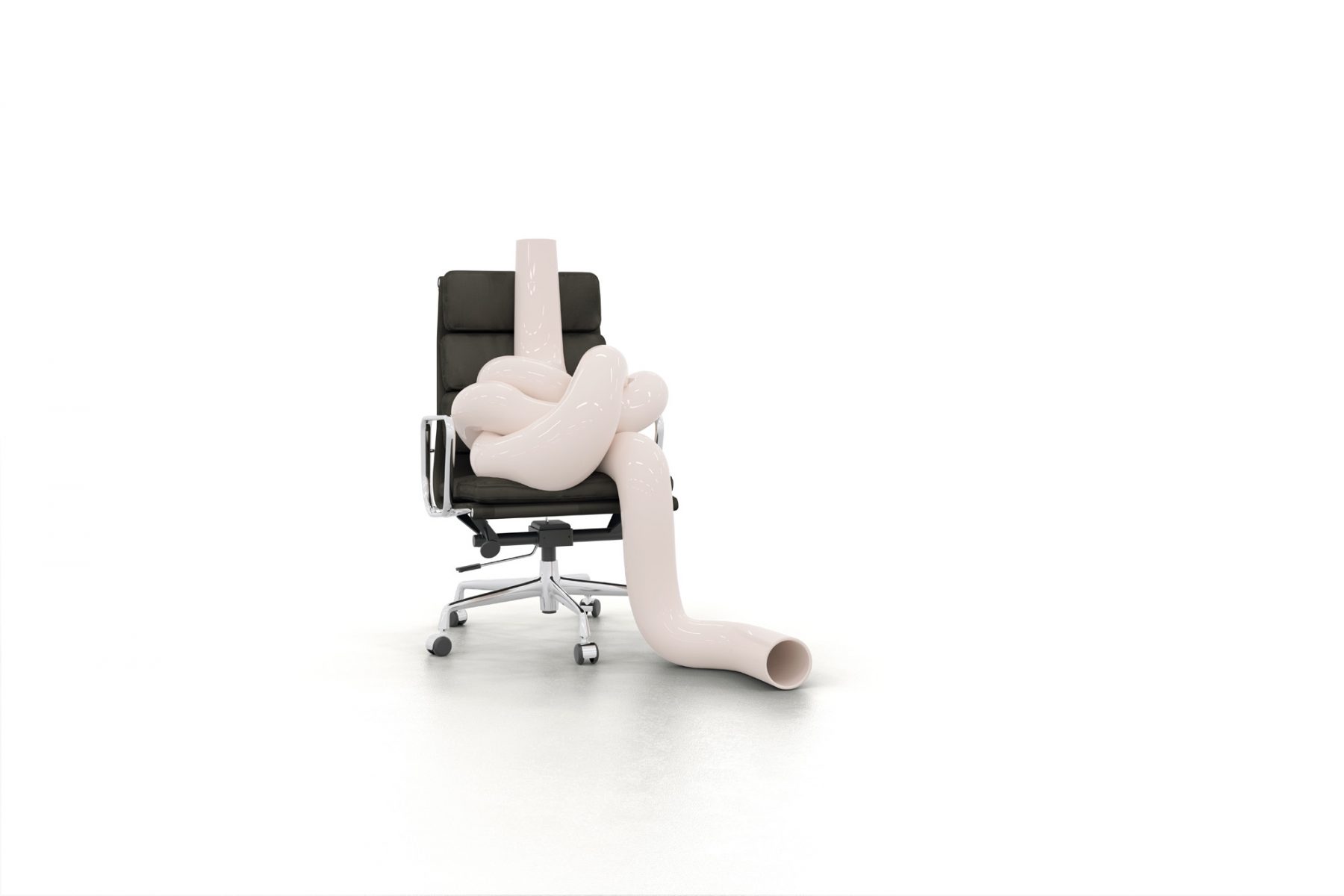
Tube [2018]
Archival pigment print, acrylic face-mount, 100 x 66 cm
Comfortably installed on an executive-style desk chair a tube is rolled into itself, and open at each of its extremities. The tube skews the distinction between interior and exterior.
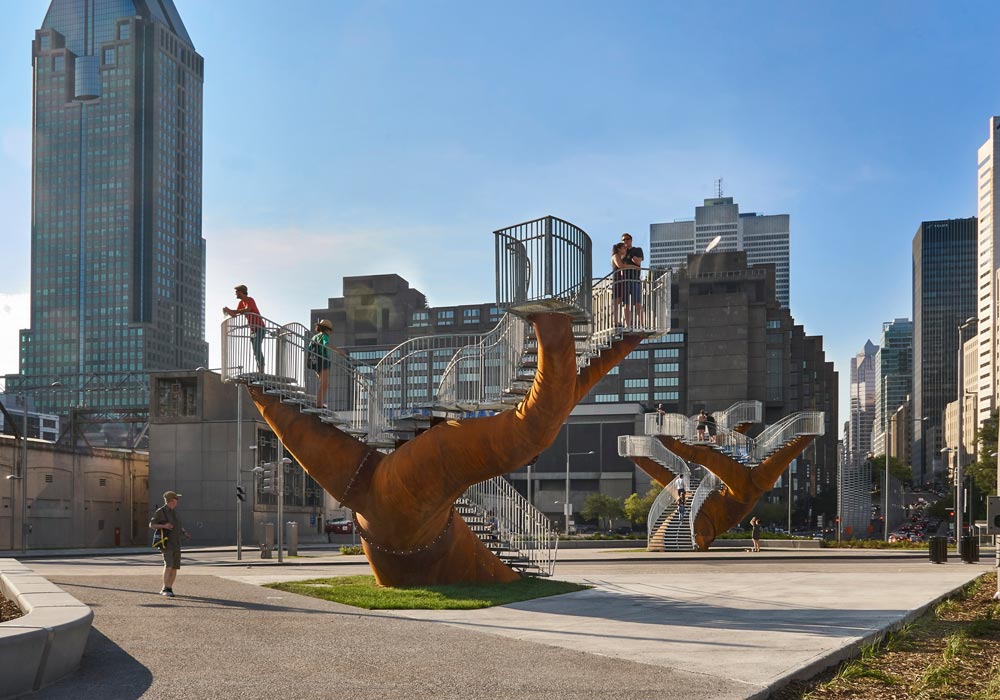
Dendrites [2017]
Corten steel, galvanized steel
9 x 12.6 x 8.2 m, 9.9 x 8.5 x 6 m
International Civil Aviation Organization Plaza (ICAO), City of Montreal
Dendrites are branched projections of a neuron, which propagate cerebral stimulation; the term is derived from the Greek dendron, also the word for tree. Two sculptures reproduce this microscopic phenomenon on a monumental scale, simultaneously evocative of large tree trunks. Climbing the steps of the sculpture allows passers-by to inhabit the landscape and reconnect with the surroundings – by climbing it’s branches they animate the sculpture much like the foliage of a tree.
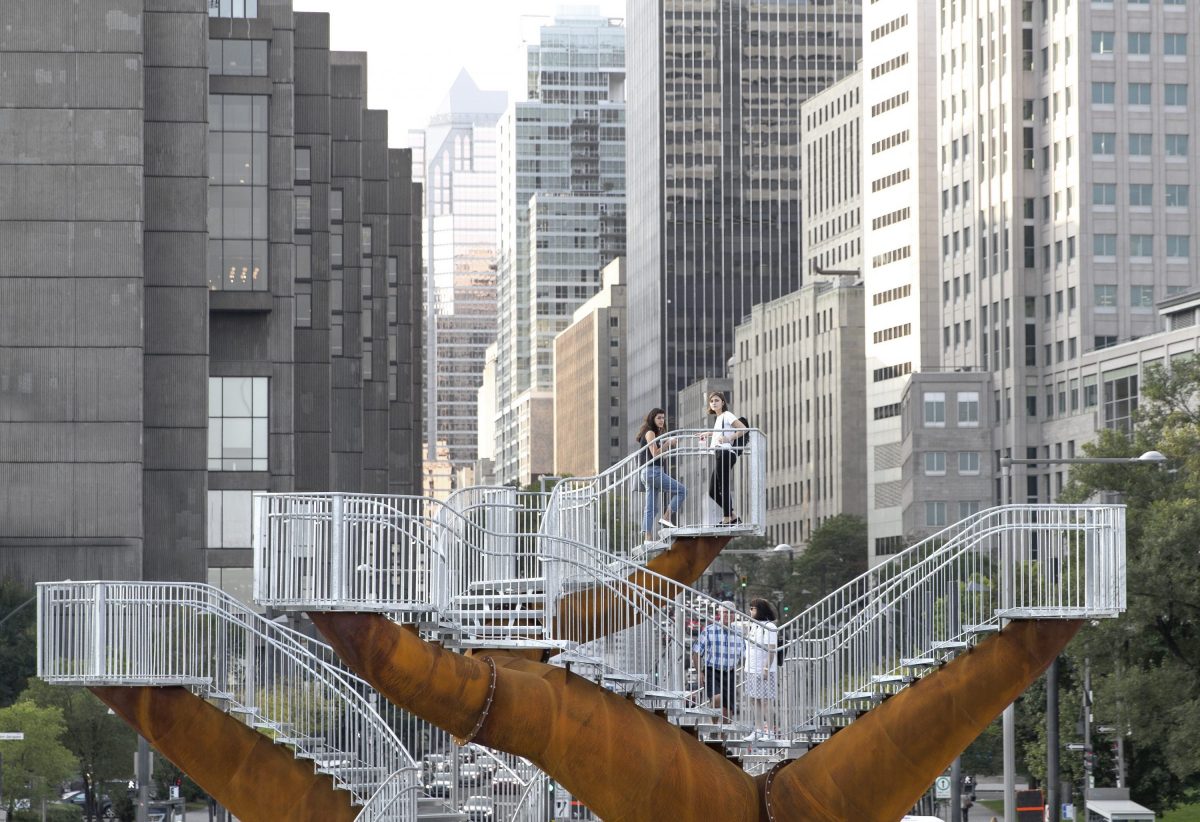
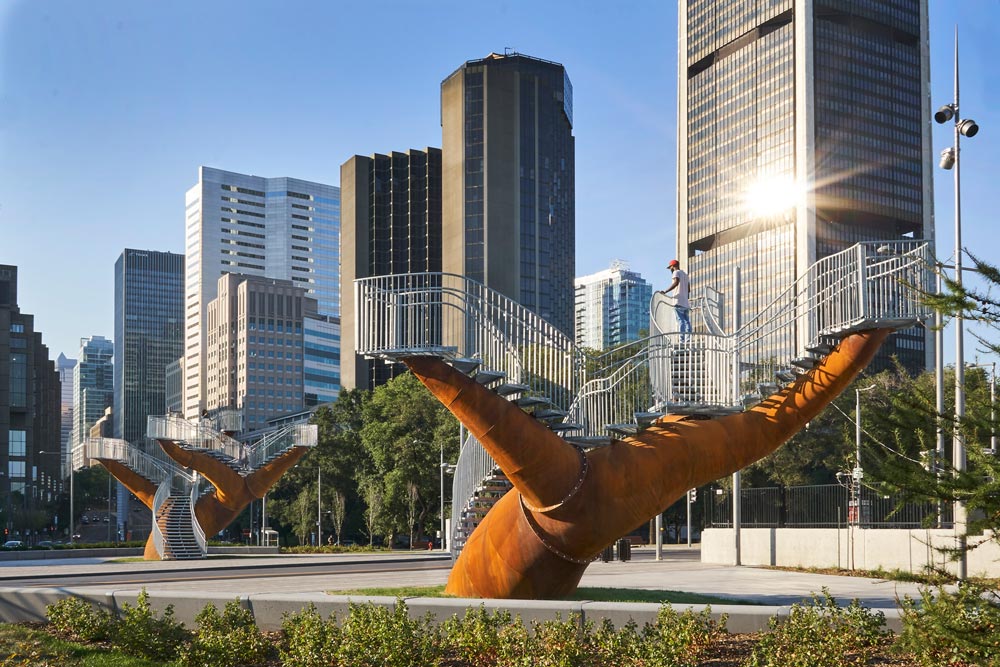
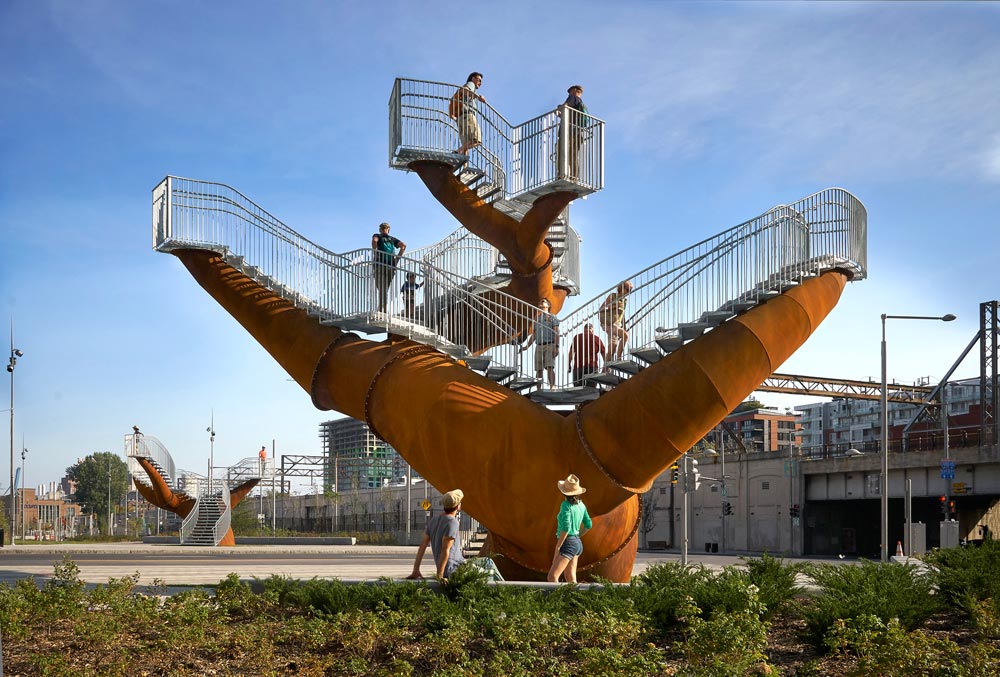
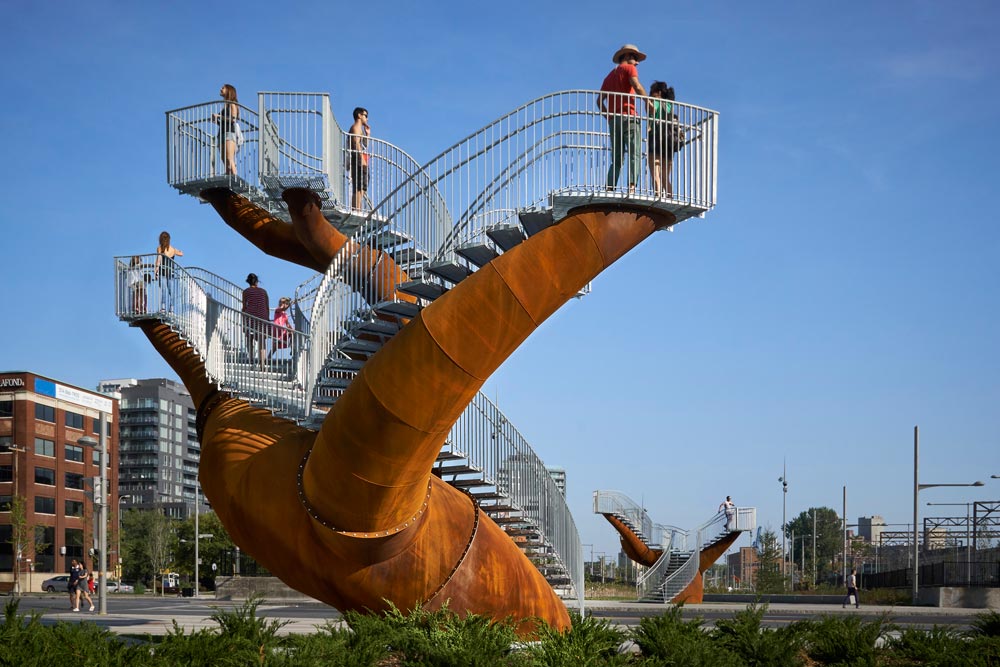
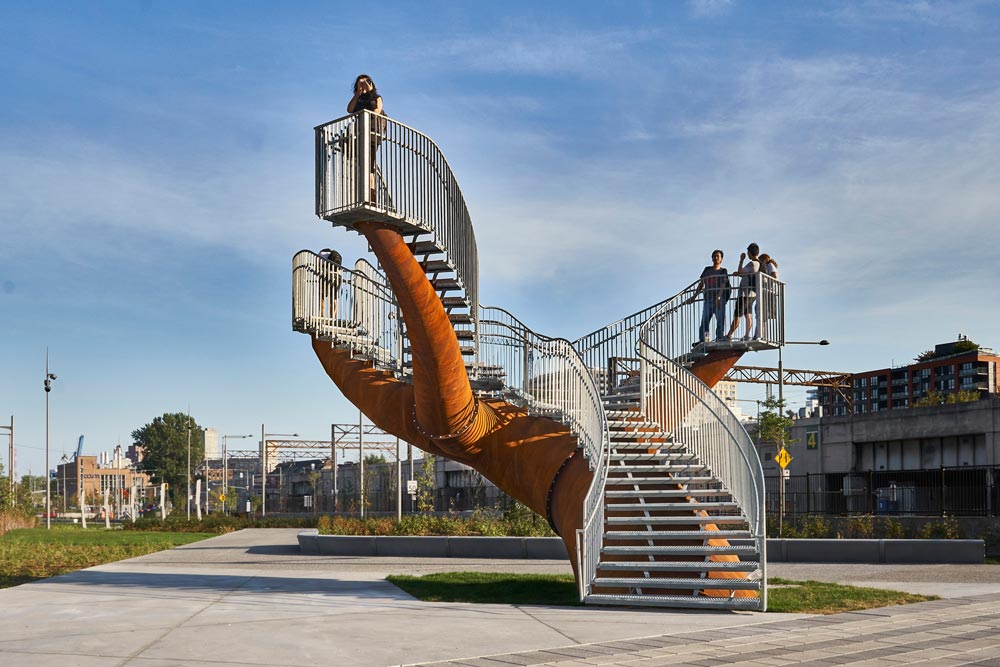
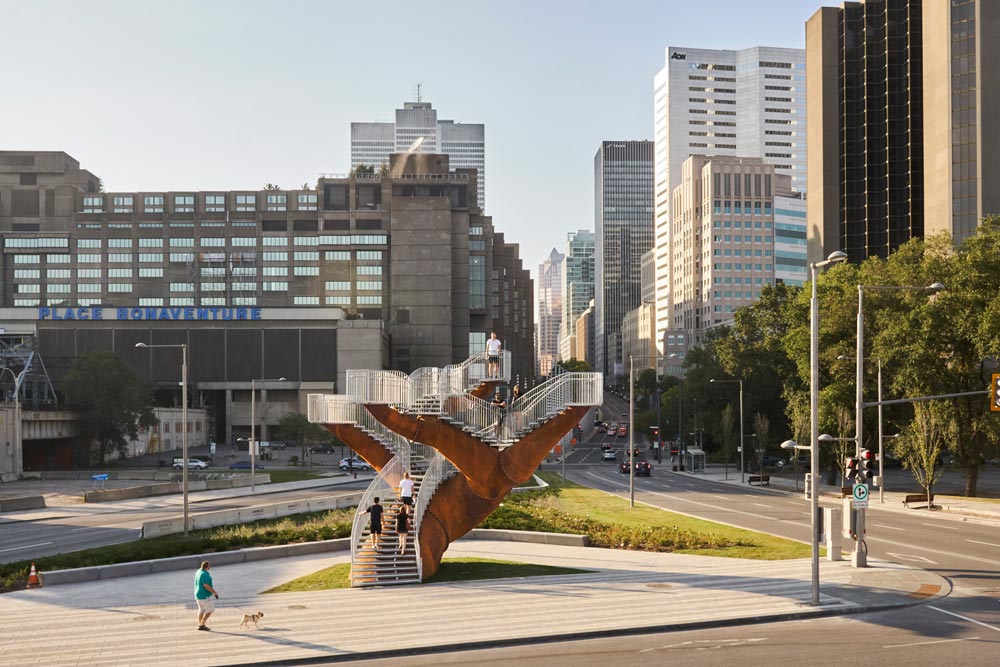
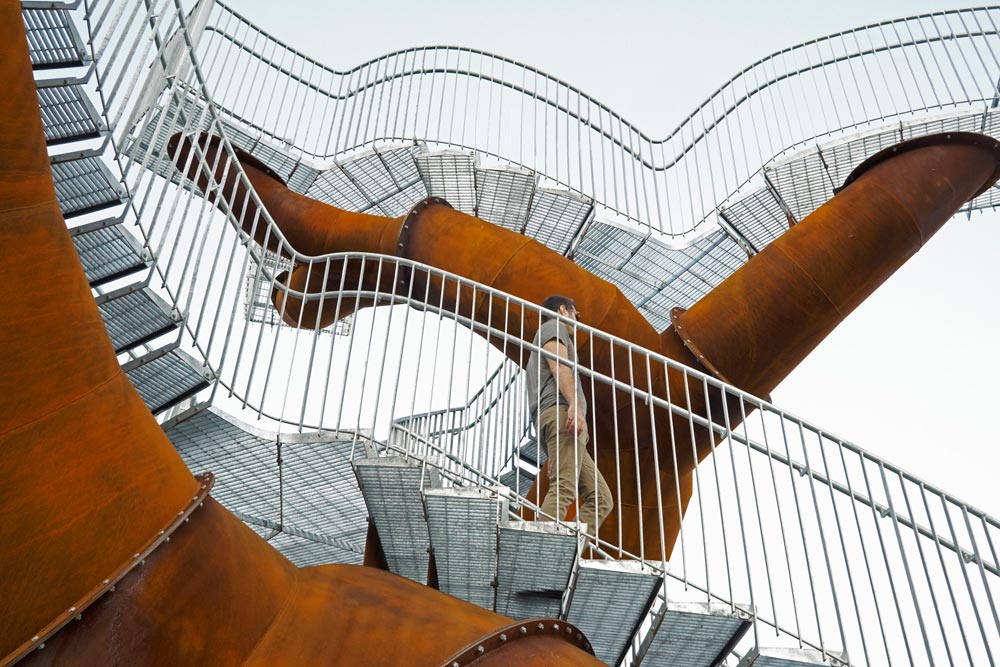
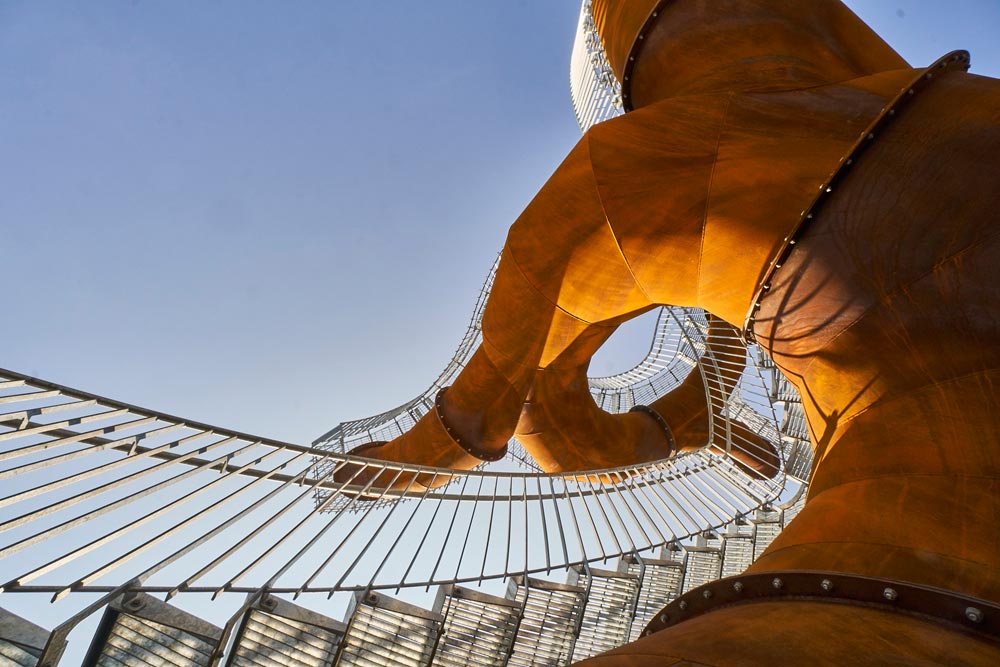
Credits: Michel de Broin
International Civil Aviation Organization Plaza (ICAO), City of Montreal
Lafontaine Iron Werks Inc and Toque Innovations (fabrication); Quantum Engineering Inc (engineer), Gabriel Rousseau (architect)
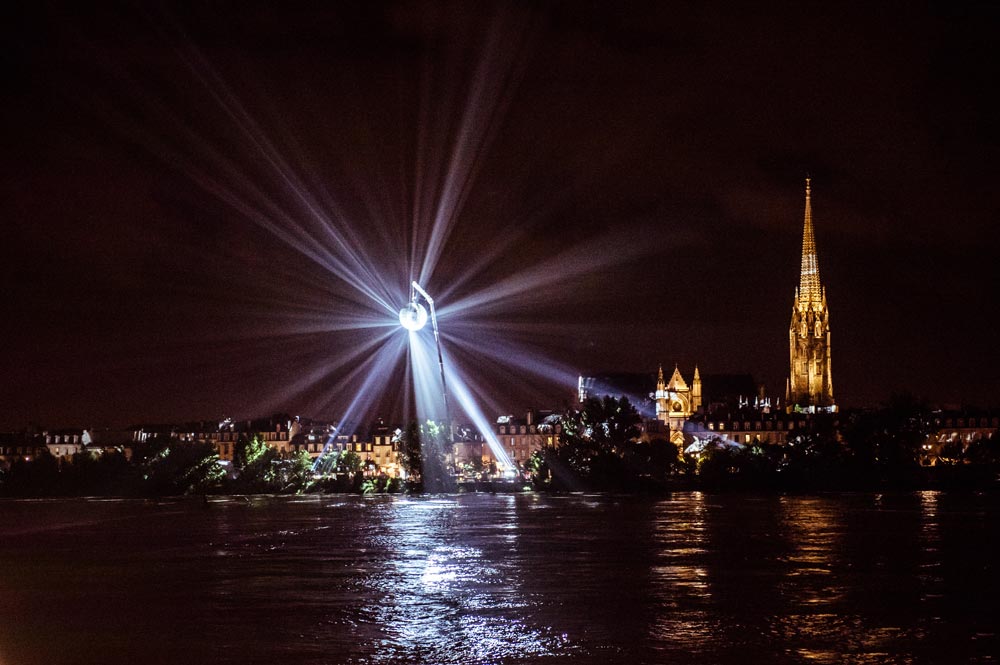
One Thousand Speculations [2017]
Metal structure, 1000 mirrors, 5 floodlights, crane
7.9 m in diameter
Contemporary art rote of the city of Bordeaux
Curator José-Manuel Gonçalvès, Photographs par Pierre Planchenault, fabrication AF Magnum
Thousand Speculations is a disco ball of 7.9 m in diameter set with a thousand mirrors. Suspended from a crane in the sky of Bordeaux, this sculpture of extraordinary dimensions reflects the light for miles. Each burst of light makes a majestic sweep of the city, lining the walls in the night, extending its trajectory in the streets and illuminating for brief moments an unexpected detail. The work thus proposes by the light it reflects a new reading of the built heritage, or a thousand dreams to the walker. Contemplating them, these sparkles of light seem to travel like the pages of a book detaching from their binding, carried away by the wind. The word speculation comes from the Latin speculum which means mirror. The thousand speculations offer a multitude of reflections to look at.
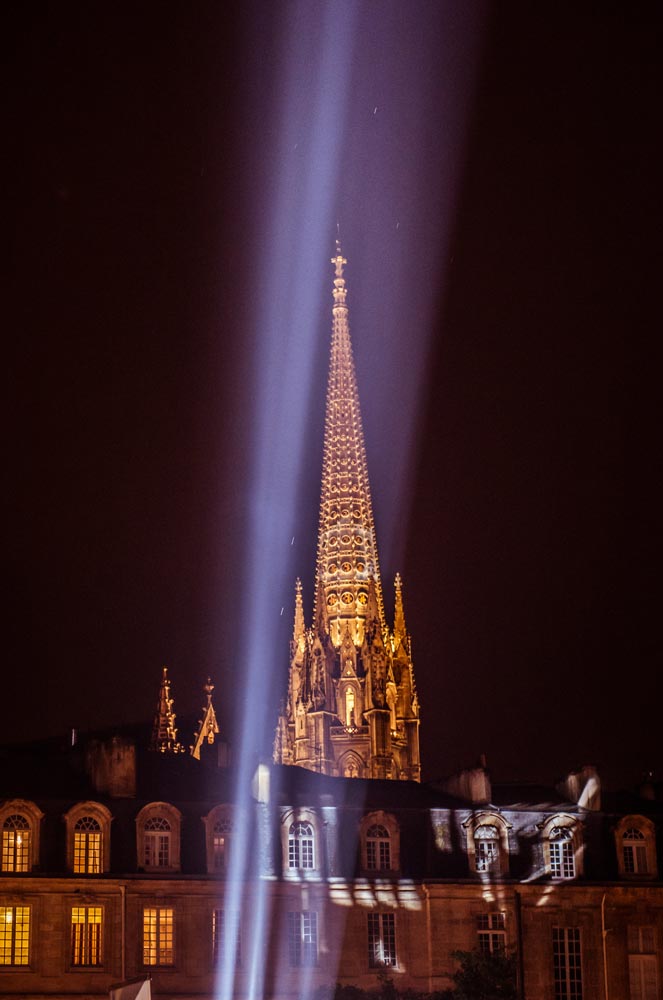

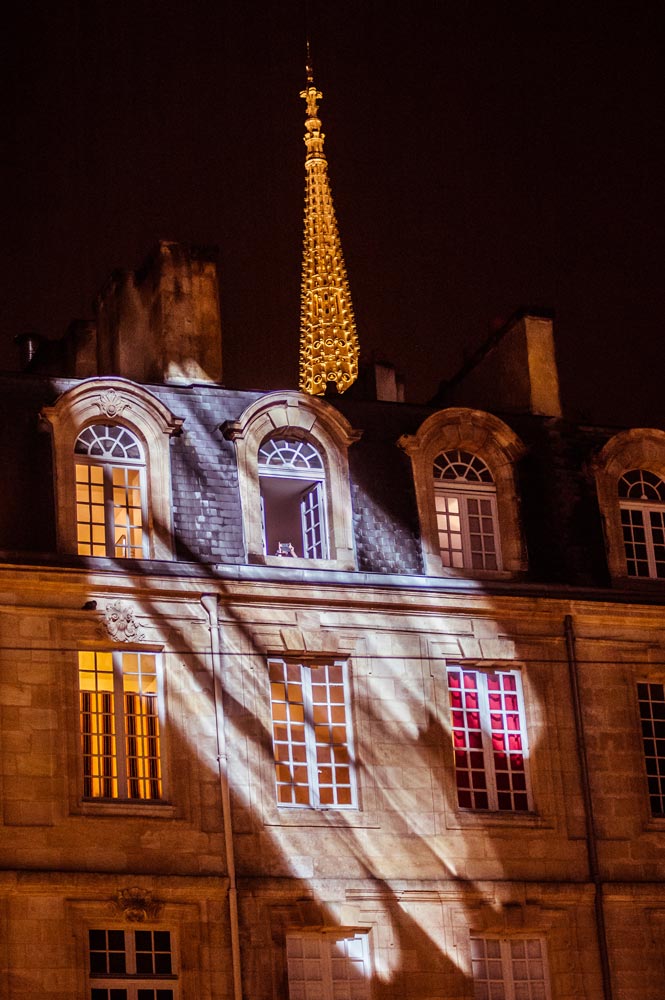
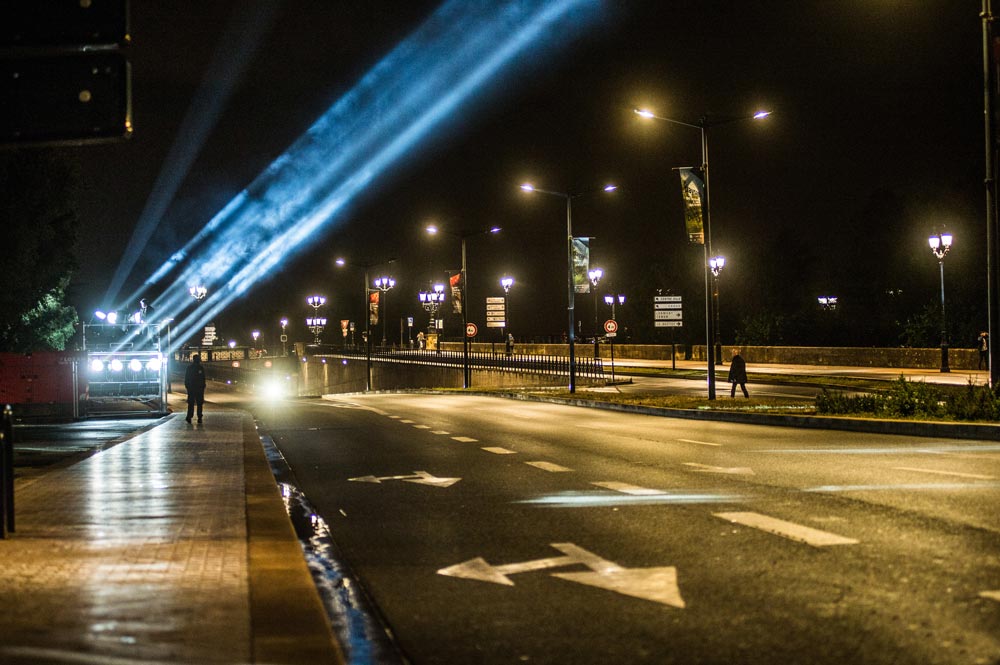
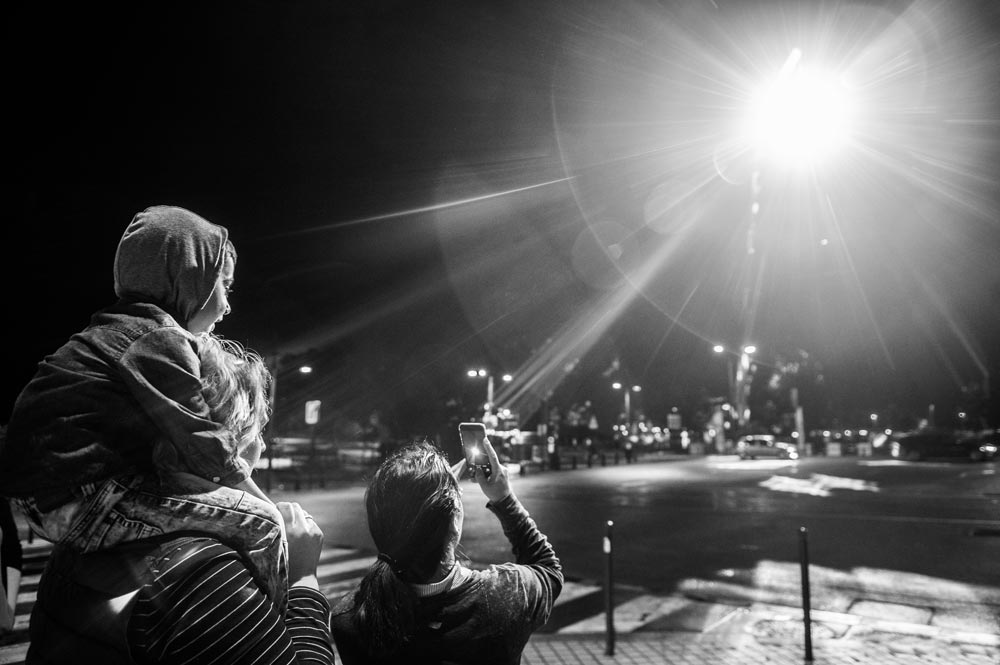
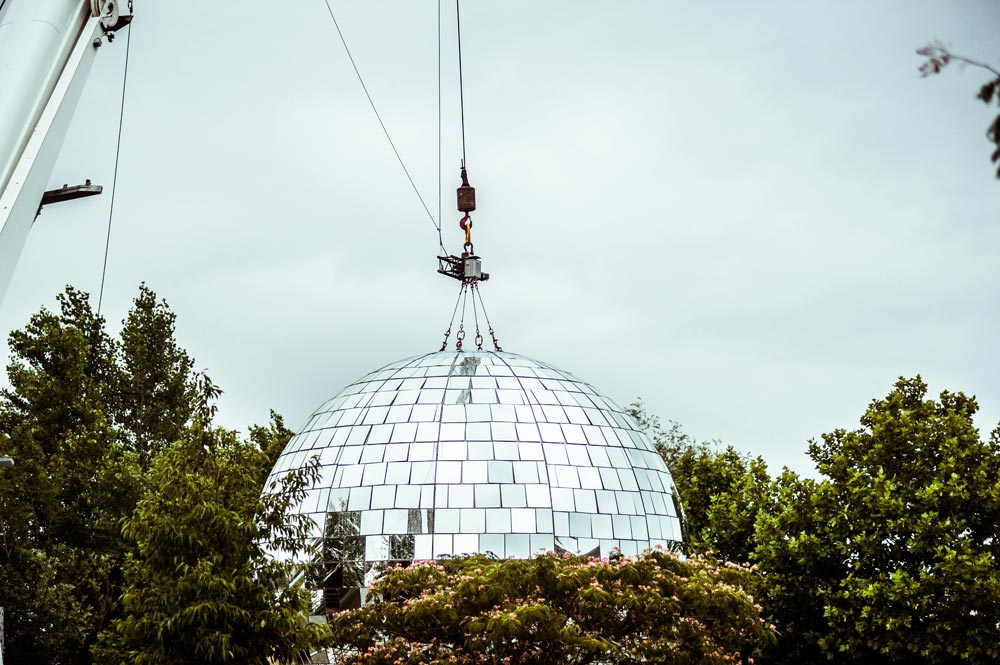
Thresholds [2017]
Retrieved subway doors, motion sensors, 15 x 3 x 2.3 m
KM3 – A public art program, Quartier des spectacles, Montréal
A series of doors creates a path the public is invited to follow, recalling the digestive tract’s ingestion process as the installation breathes and swells to the rhythm of the traffic that passes through it, creating a contrast between mechanical structure and organic movement. The piece repurposes the door-opening device’s mechanical innards, reactivating its technical memory, now made obsolete by the arrival of new metro cars.
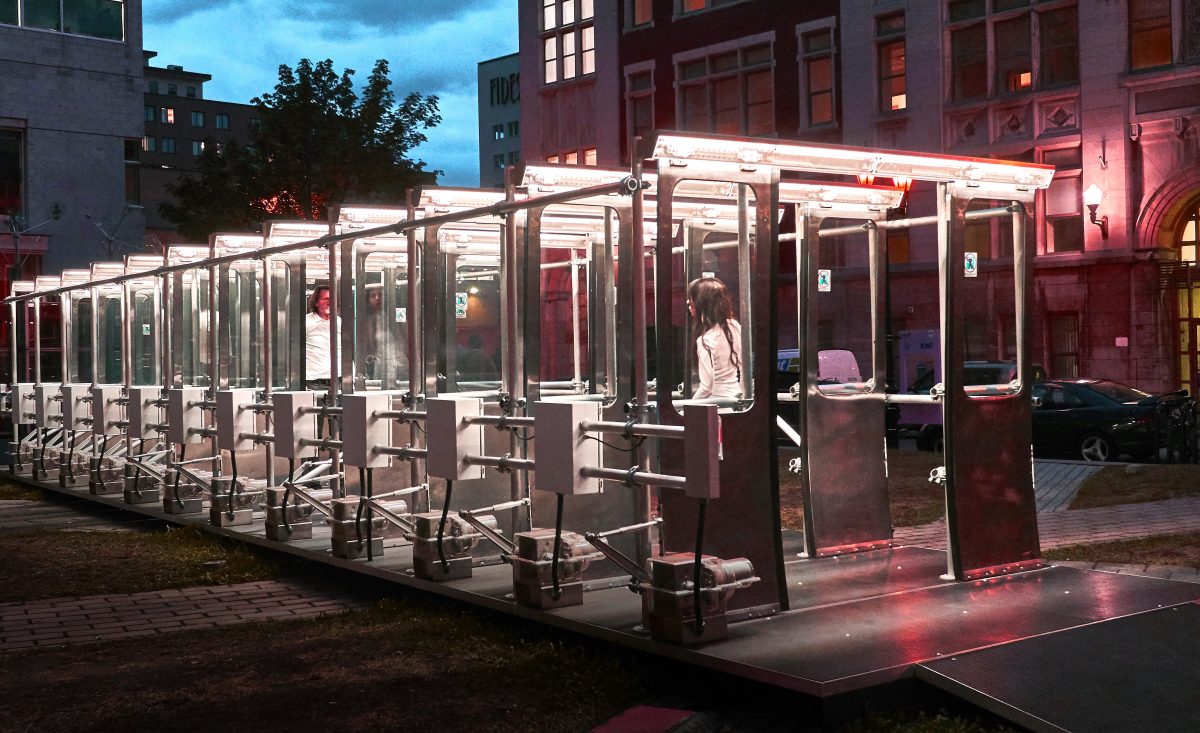
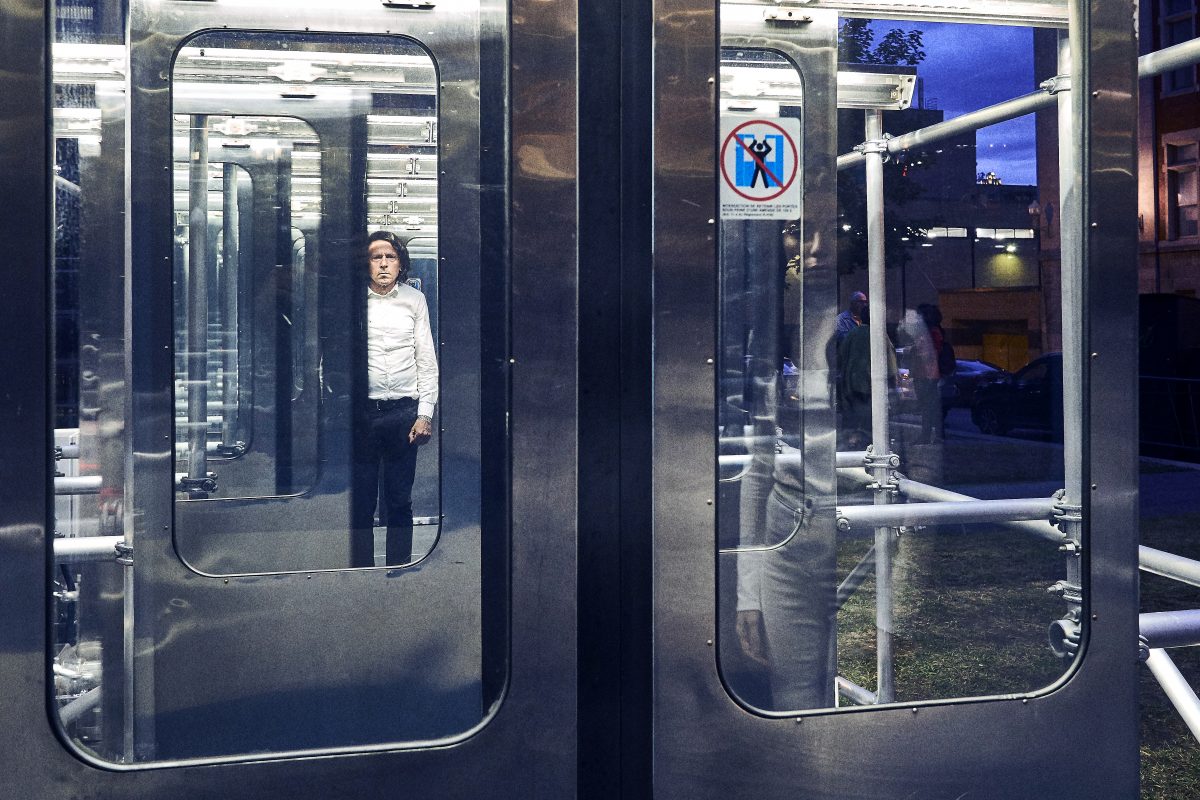
Thresholds is an interactive installation that invites the general public to embark on a journey. It is a crossing that calls to mind the velocity of our urban journeys, small moments in everyday time and space.
Made up of a dozen metro car doors, the work activates in the presence of visitors. It literally holds the doors open for them as they approach and walk through it. The components come from old MR-63 metro cars, whose impact on the collective Montréal imagination is undeniable. The piece serves to keep this technological memento alive. The old cars were retired to a recycling centre, where they were ripped apart and recycled at great cost to the environment. In our consumerist society, technological objects become obsolete at an accelerated pace in a process that depreciates vestiges of the past. The technical development narrative contained in each progression is quickly undermined in disruptive chains of innovation. The parts that are reused after having been idle for some time still hold a treasure trove of, and tell a story about, human inventiveness. Dismantling obsolete mechanisms and giving them new life is fascinating because its dislocation updates human know-how and reveals where it was in terms of progress at a given time.
As visitors approach the installation, the first door opens and invites them inside. In a simultaneous sequence, the other doors give way and then close behind them to follow the movement of bodies through this transitory space. The successive mechanised opening and closing of the doors is synchronized thanks to sensors: anticipating the presence of a passenger, Thresholds sets off a fluid wave of movement triggered by an interactive system. It is a meeting and a convergence of two eras, that of integrated circuits governing the mechanical parts of a bygone one. The mechanism on each sliding door is showcased inside a Plexiglas box, so visitors can see it hard at work as they progress through the doors. Opting for transparency, the installation retains and remakes the internal mechanics of the original devices, highlighting them and reaffirming the innovation lying dormant at the heart of obsolescence.
This is not the first time de Broin revisits the mechanics of industrial objects in order to shift their function and meaning. In fact, several works come to mind: Monochrome Bleu (2003) was a spa made out of a used waste container; Keep on Smoking (2005) presented a bike on which the cyclist’s efforts literally went up in smoke; the bold Shared Propulsion Car (2005) featured a 1986 Buick Regal cruising the busy streets of New York City. The vehicle’s exterior appearance remained intact but its motor worked without fuel, having been modified to run on the energy exerted by human beings using pedals. This performative piece is a caustic statement on the apocalyptic consequences of consumerism and technical progress. Stripping these industrial objects of their paralytic statuses—whether with waste containers, vehicles or metro doors—present an opportunity to activate the speculative mechanics through which we can investigate other worlds stemming from the relics of our current environment. It is also a form of technical archaeology—modifying objects from our world is in essence formulating hypotheses about it, about its potential and its limitations, about what is possible and what isn’t, or even what is no longer possible. The process by way of which objects are made obsolete tends to defy that potential, our ability to reuse technological artefacts.
Thresholds is an interactive installation that relies on both technology and technics, but its powerful materiality is what provides a complex sculptural experience. It can be experienced from the inside or contemplated from the outside, while motionless or in motion—whatever suits one’s fancy. Whether the visitor is a passenger activating the mechanism or a spectator to the transit, what is seen and experienced will correspond to different time lapses and perspectives; the installation is subject to a dual reading. While visitors may be given the impression that the machine is molding them by opening around them without any resistance as they make their way through the piece, the passage may look, from an external vantage point, like the visitors are being swallowed, even devoured. The work is analogous to manducation, an amalgam of the installation’s mechanical aspect and something reminiscent of the organic realm.
The parallel with ingestion/digestion is echoed in the broader notion of transformation. While the installation has been assembled using subjugating devices (sensors, doors, circuits, programs), the proposed experience defies initially programmed behavioural expectations. It is inversely multiple, transformative and moving. No part of it is static, and neither is the very principle of what keeps the experience fresh.
The piece and the journey through it suggest a renewed desire for progressing though a mise en abyme of thresholds. Is it about transition toward the future or through the technical memory of its components? Or rather, it is about entering a present time where resistance is weakened and where what is seen and experienced is simultaneously affirmed and softened, offering visitors a moment in which dualities momentarily cease to oppose each other. The world opens up, every movement traversing it tearing through the fabric of time: every gesture brings forth an immediate future, already relegating the gesture’s genesis to the past. (Nathalie Bachand)
Créée dans le cadre de KM3 avec le soutient du partenariat du Quartier des spectacles, de la ville de Montréal, du ministère de la Culture et des Communications du Québec ainsi que de la Société de transport de Montréal. Curators Mouna Andraos and Melissa Mongiat; were involved in the production Samuel Saint-Aubin, Alexis Gosselin, Paul Duchaine, Pierre Fournier, Fred Monast, M.O., Generic Design, HMB Controls, Concept Paradesign.

Make Soccer Great Again [2017]
Endless Landscape, AXENÉO7 – La Fonderie, Gatineau
Invited to intervene on a soccer field for the exhibition Endless Landscape, I seized the opportunity to redefine the game’s rules, originally codified by the British in the late nineteenth century. Make Soccer Great Again assesses the bellicose nature of the battle for the ball and proposes to change the rules by fencing the field in the borders. In keeping with Bill 1, which regulates the division of the soccer field, a white picket fence not only rings the artificial turf to delineate the territory, but divides the field up into sections, isolating the players so that they can no longer exchange the ball. The arbitrary rules are an appeal to disobedience, giving rise to a desire to jump over the barriers and overcome the obstacles in order to invent a new game.
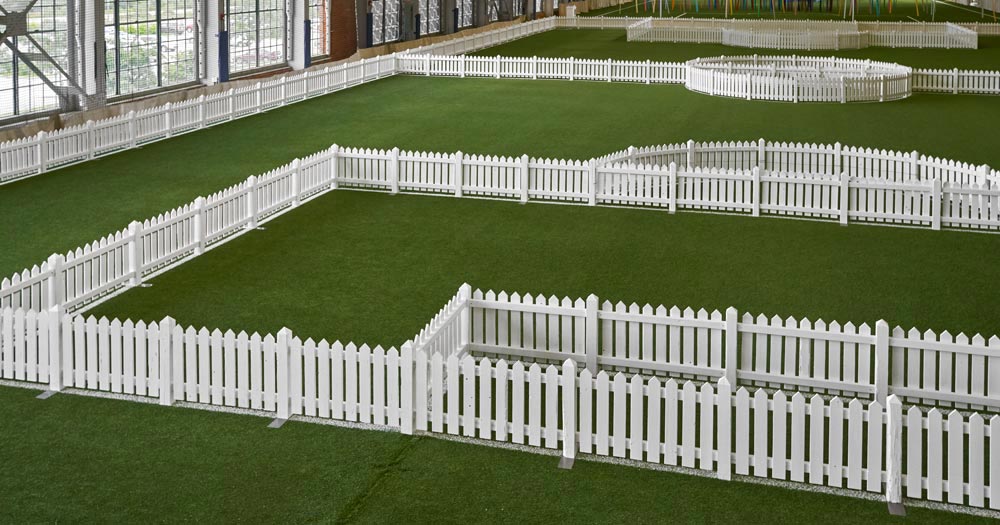
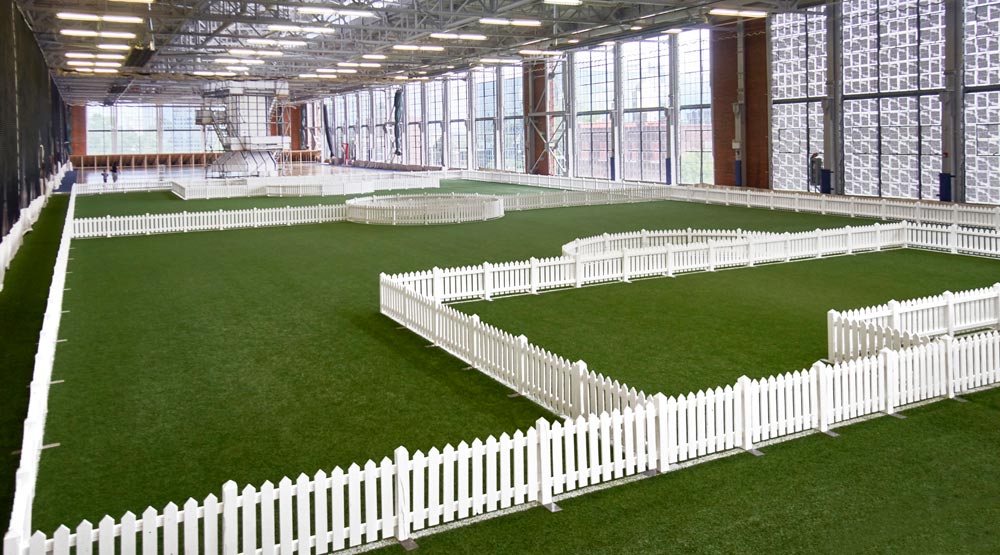
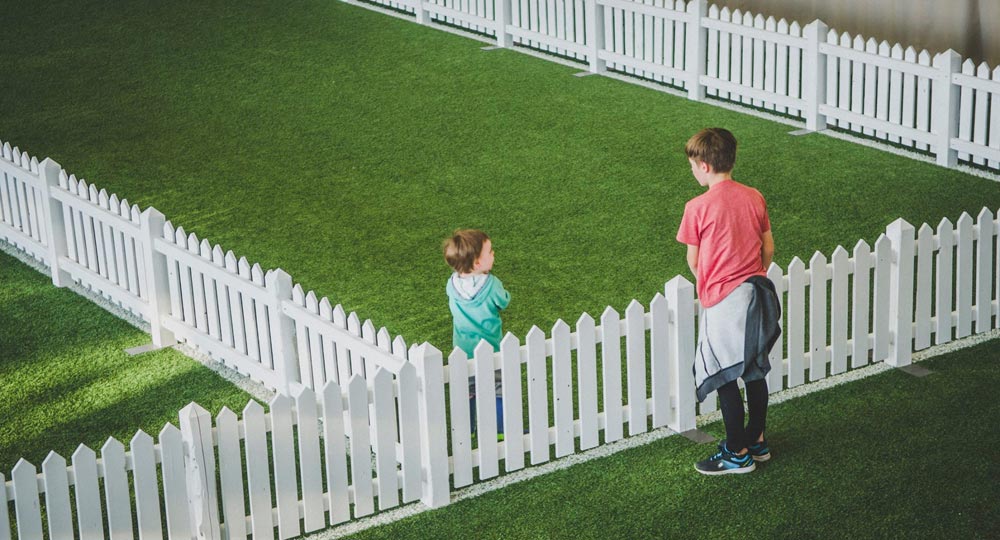
Credits : Michel de Broin
Endless Landscape, AXENÉO7- La Fonderie, Gatineau
Aïda Lorrain and Matthew Palmer (assistants); Guillaume Ethier (photo). AXENÉO7’s team : Stefan St-Laurent, Anykrystel Coppet, Jean-Yves Vigneau, Josée Dubeau, Mélanie Myers, Mathieu Pronovost and volunteers.
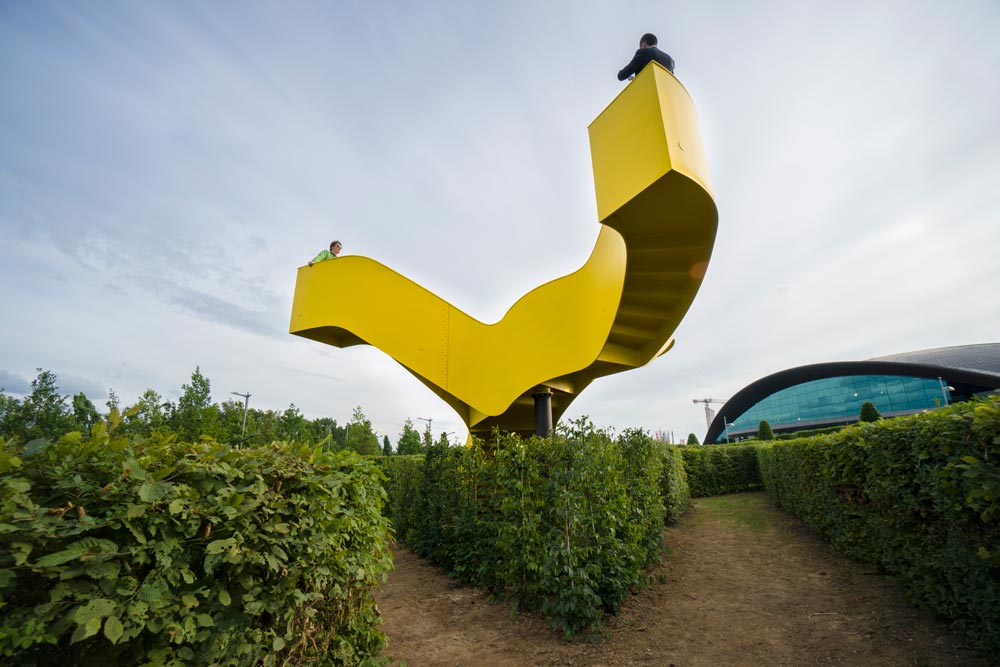
Dentrite [2016]
Steel, paint, 6,75 x 7,50 x 5,30 m
Parc Central Kirchberg, Luxembourg-Kirchberg, Luxembourg
Within the context of the Labyrinthe du Parc Central, Dendrite—a reference to the branched structure of the neurons that constitute our minds—provides visitors with the opportunity to climb above the encompassing walls of the maze, giving the chance to see the architecture of their pathway to the centre (as well as the vibrant surrounding landscape of the Plateau de Kirchberg), and, to preemptively observe their subsequent path to the exterior. The sculpture’s tree-like structure, requires visitors to choose a particular path to climb. As one ascends the stairway, they encounter a point where they must choose one path that leads directly to an observation point, or select a second pathway that then also requires a further decision. A thought in the brain travels through dendrites much like a human ascending the sculpture and both inevitably lead to the goal of processing the structures of our world. Each of its branches extends in a different direction, allowing for a panoramic view of the surrounding gardens, art works, and architecture. From outside of the Labyrinthe, visitors and passersby will be able to see the top of the tree-like form, reaching above the walls of the maze from all directions.
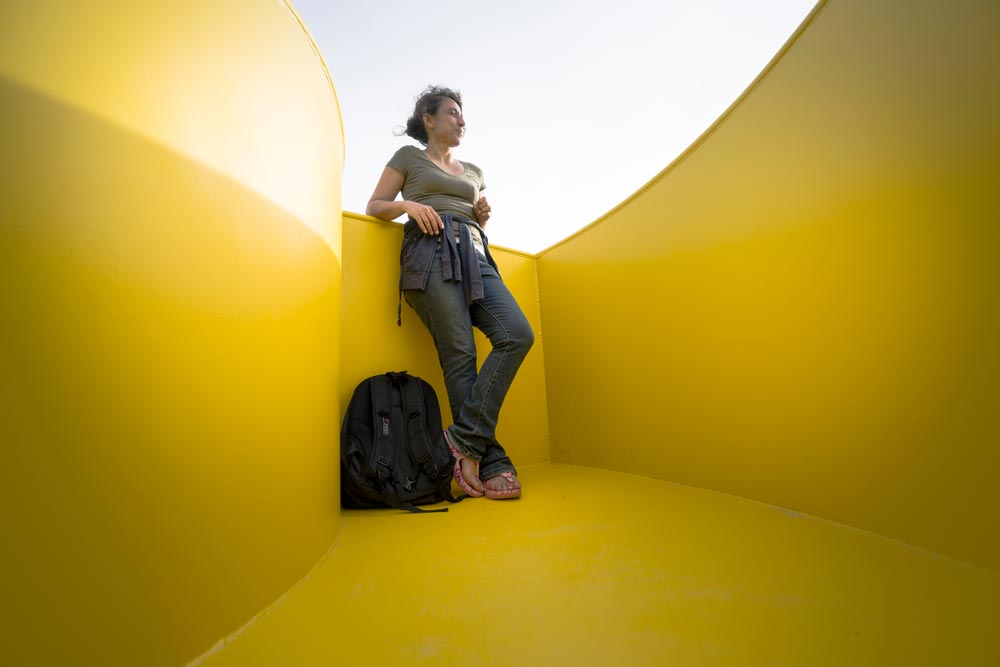
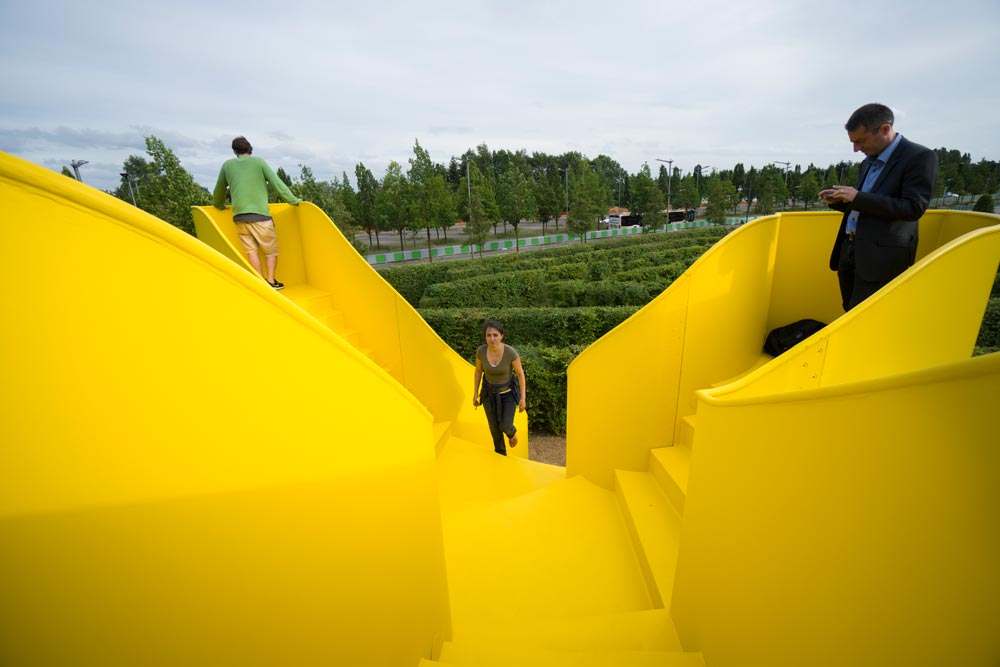
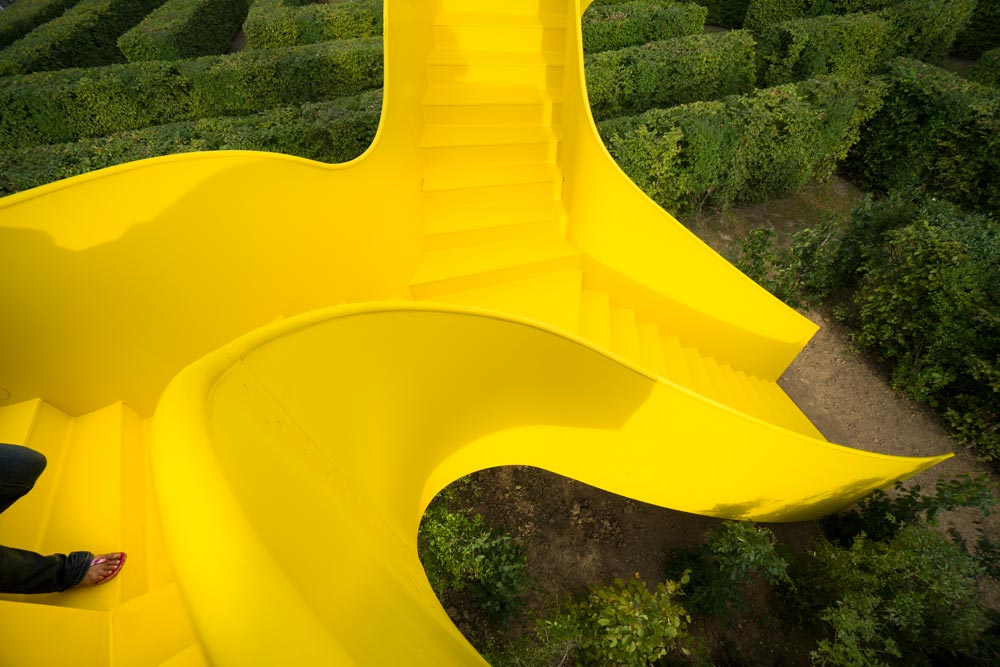

Credits: Michel de Broin
Fonds d’urbanisation et d’aménagement du plateau de Kirchberg, Luxembourg
INCA Ingénieurs Conseils Associés, Niederanven (engineer); A.M. Nico Betzen – Crézé, Fouhren / Saint-Jacques de la Lande (fabrication)